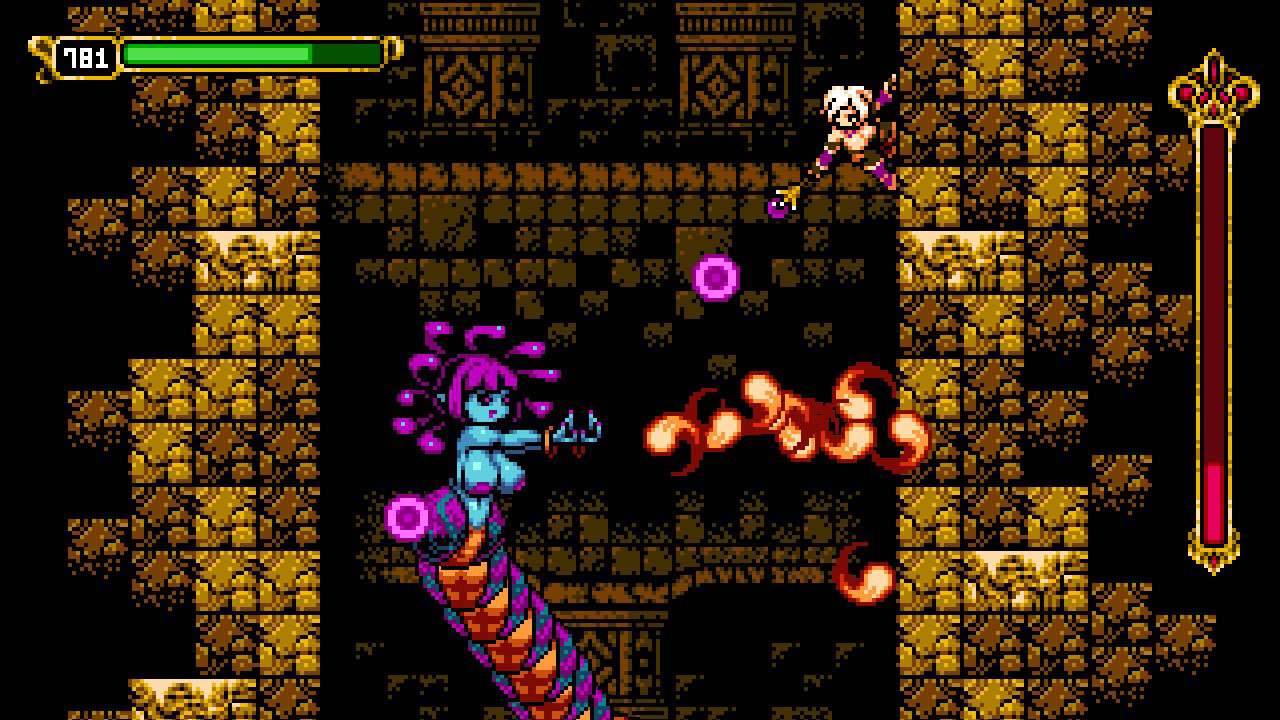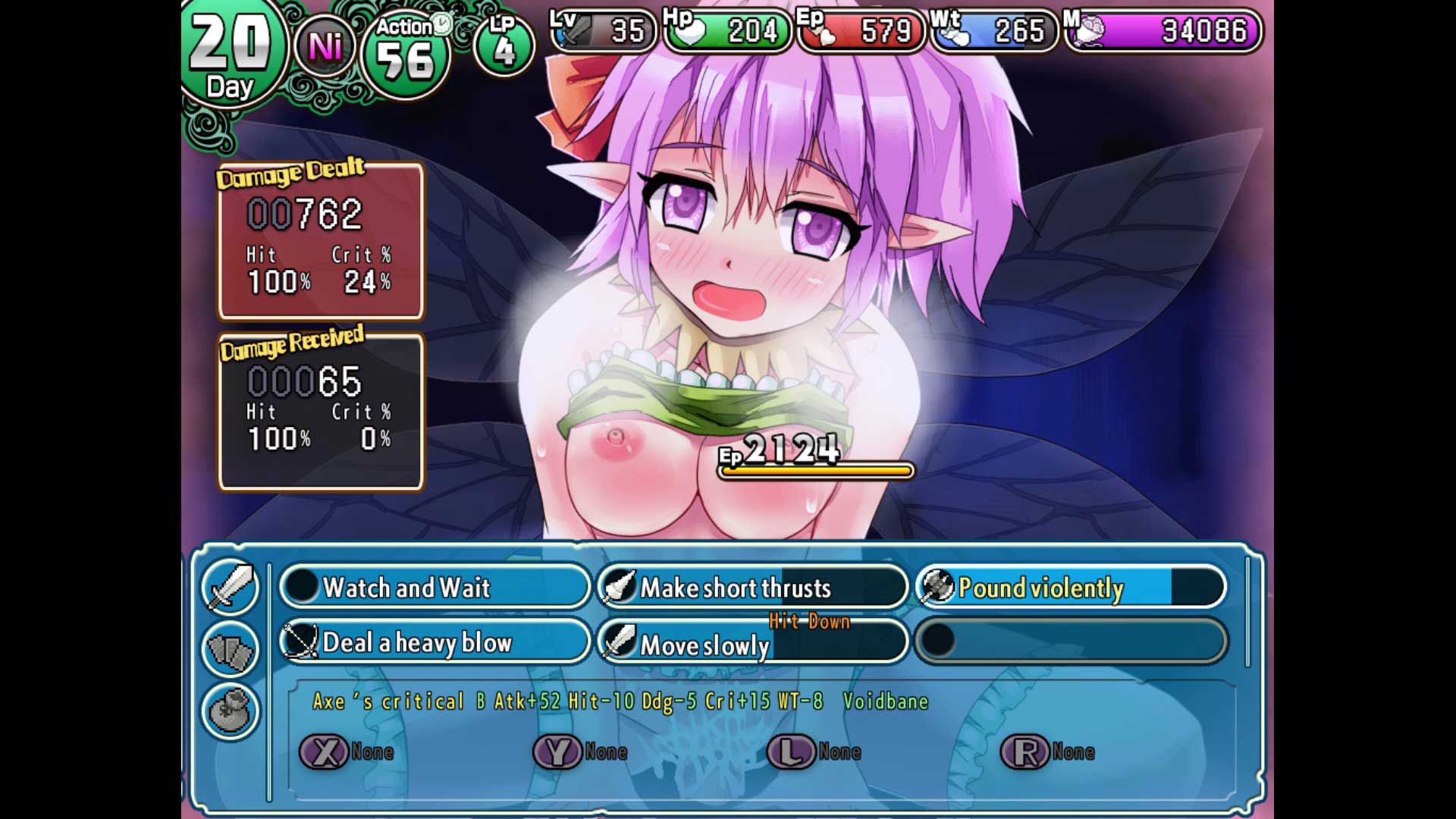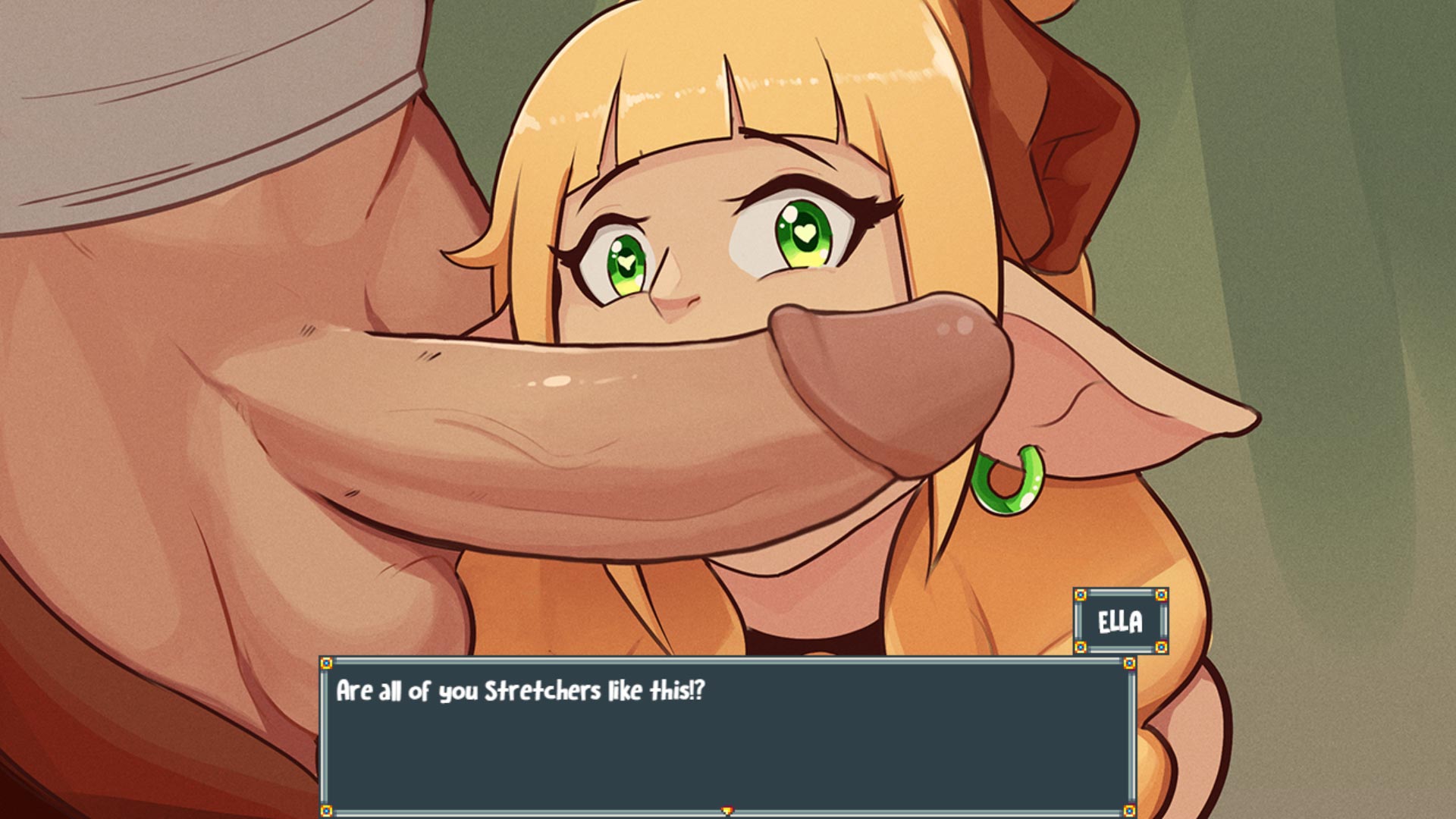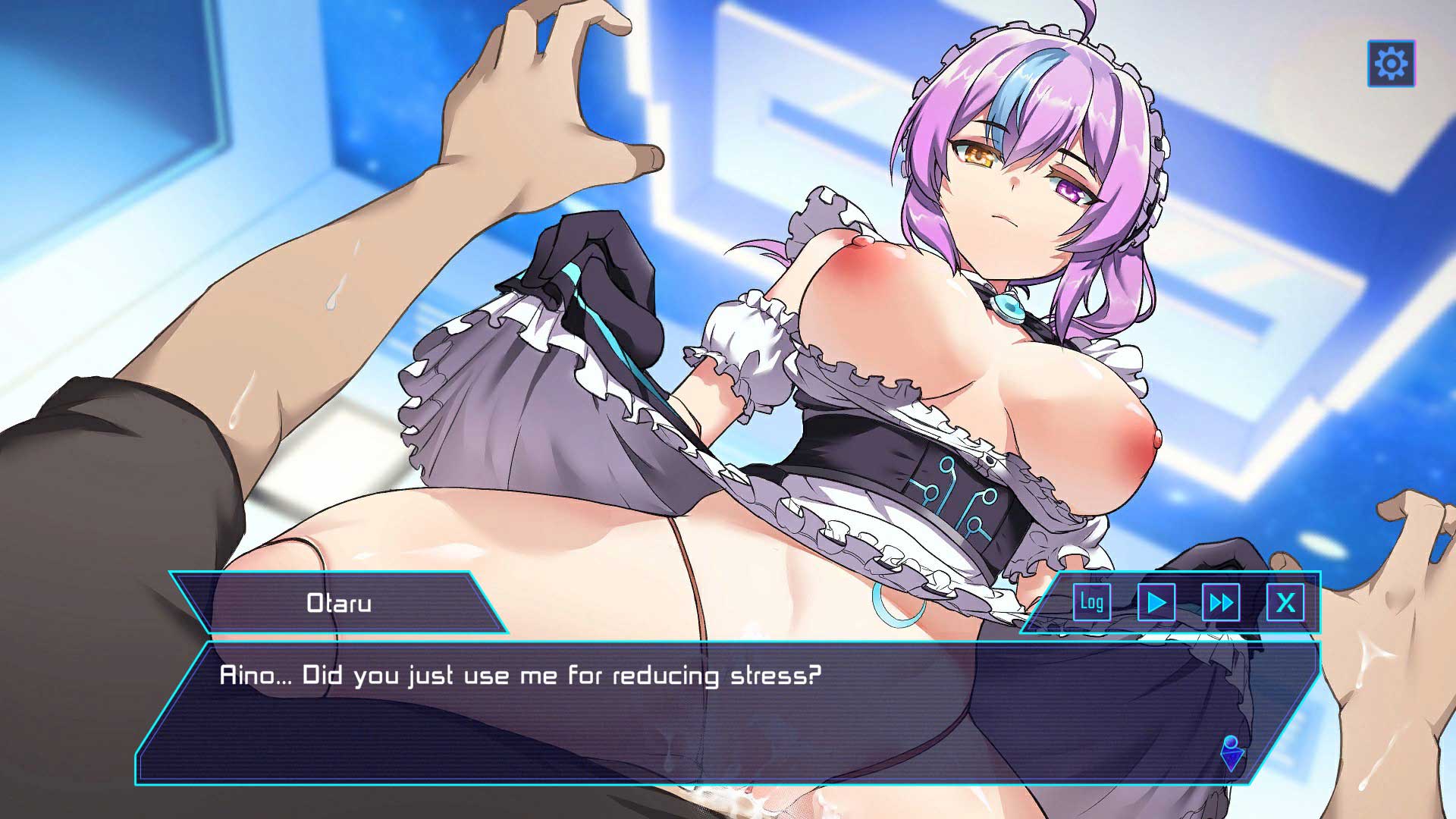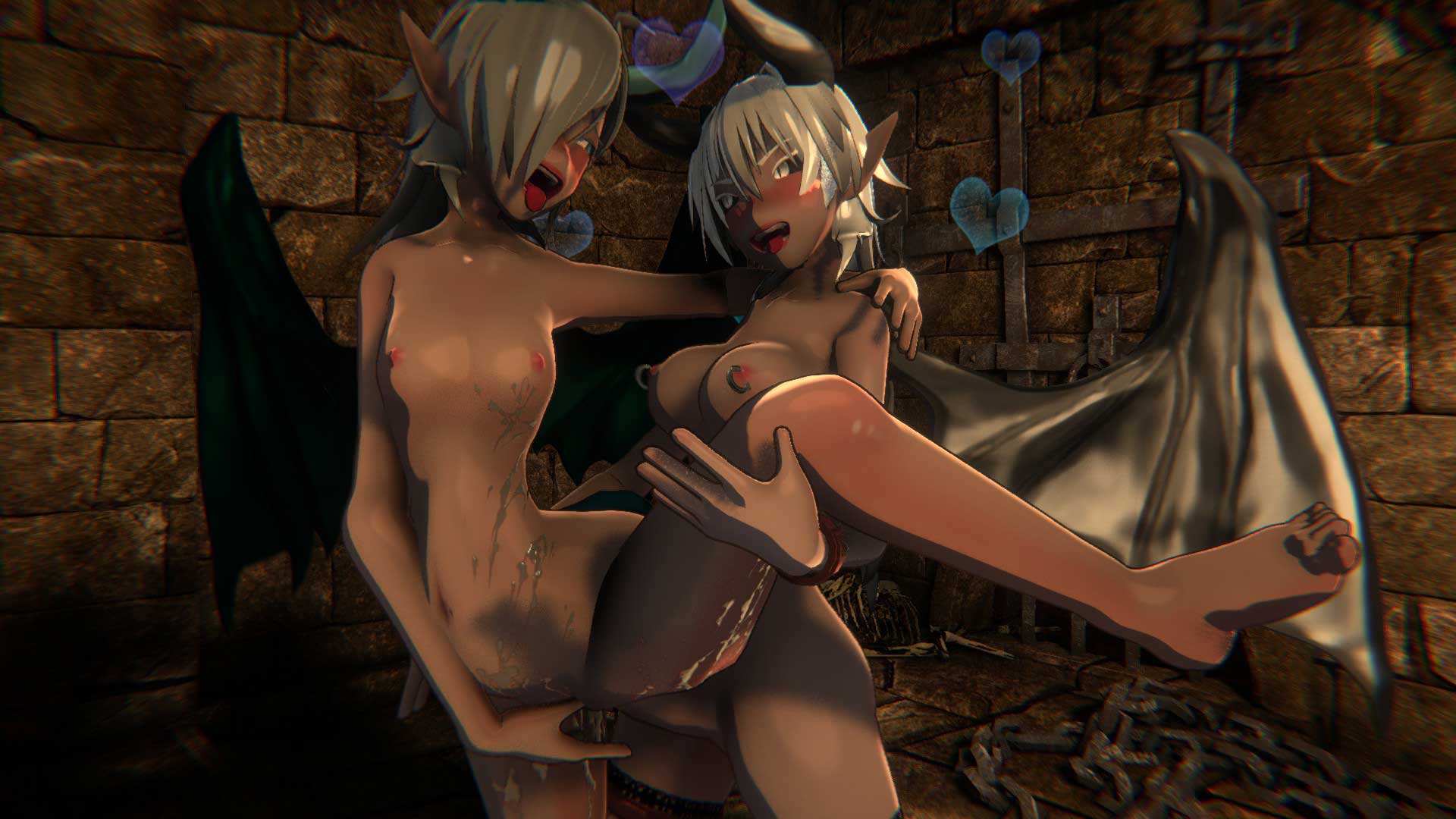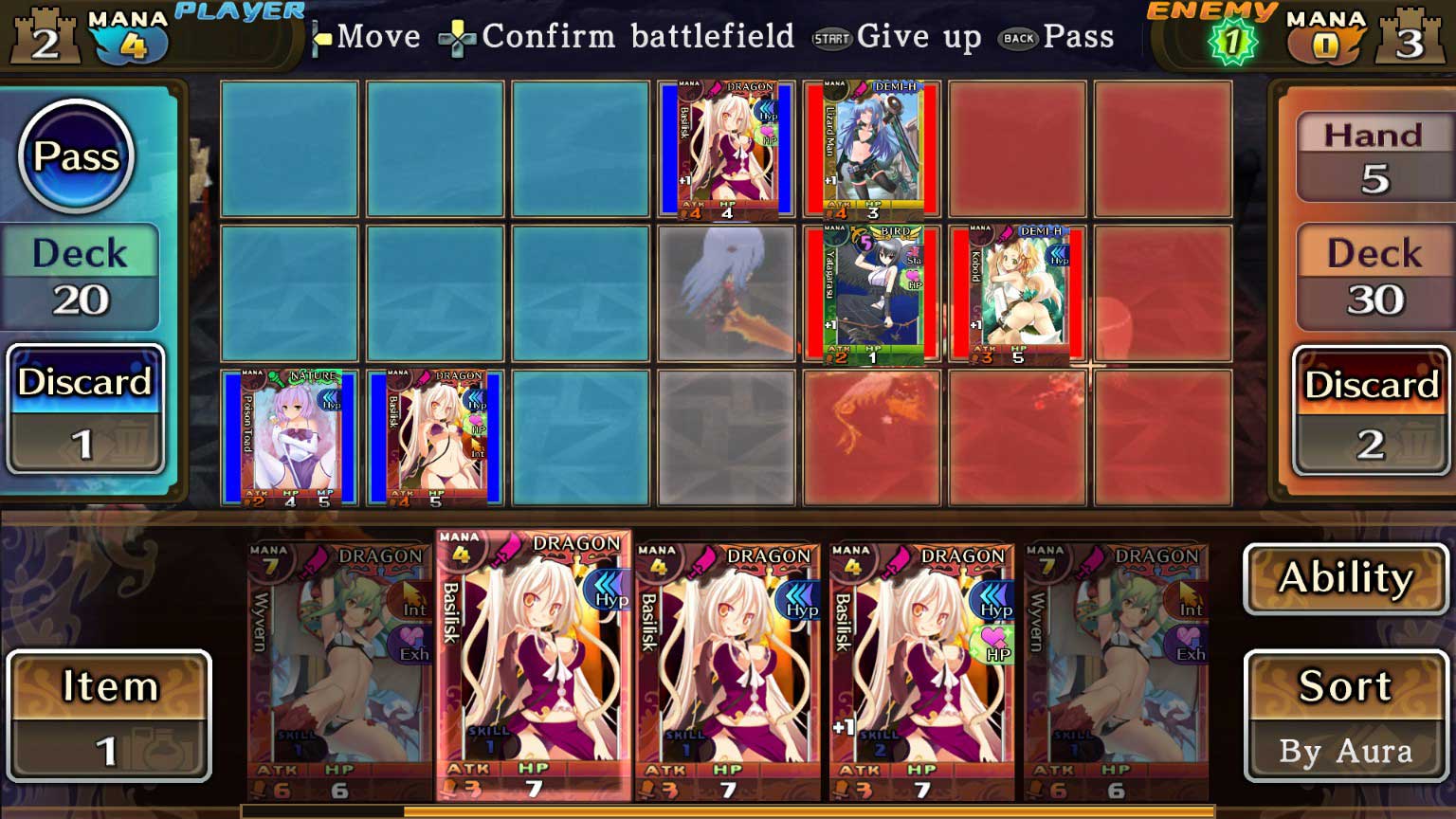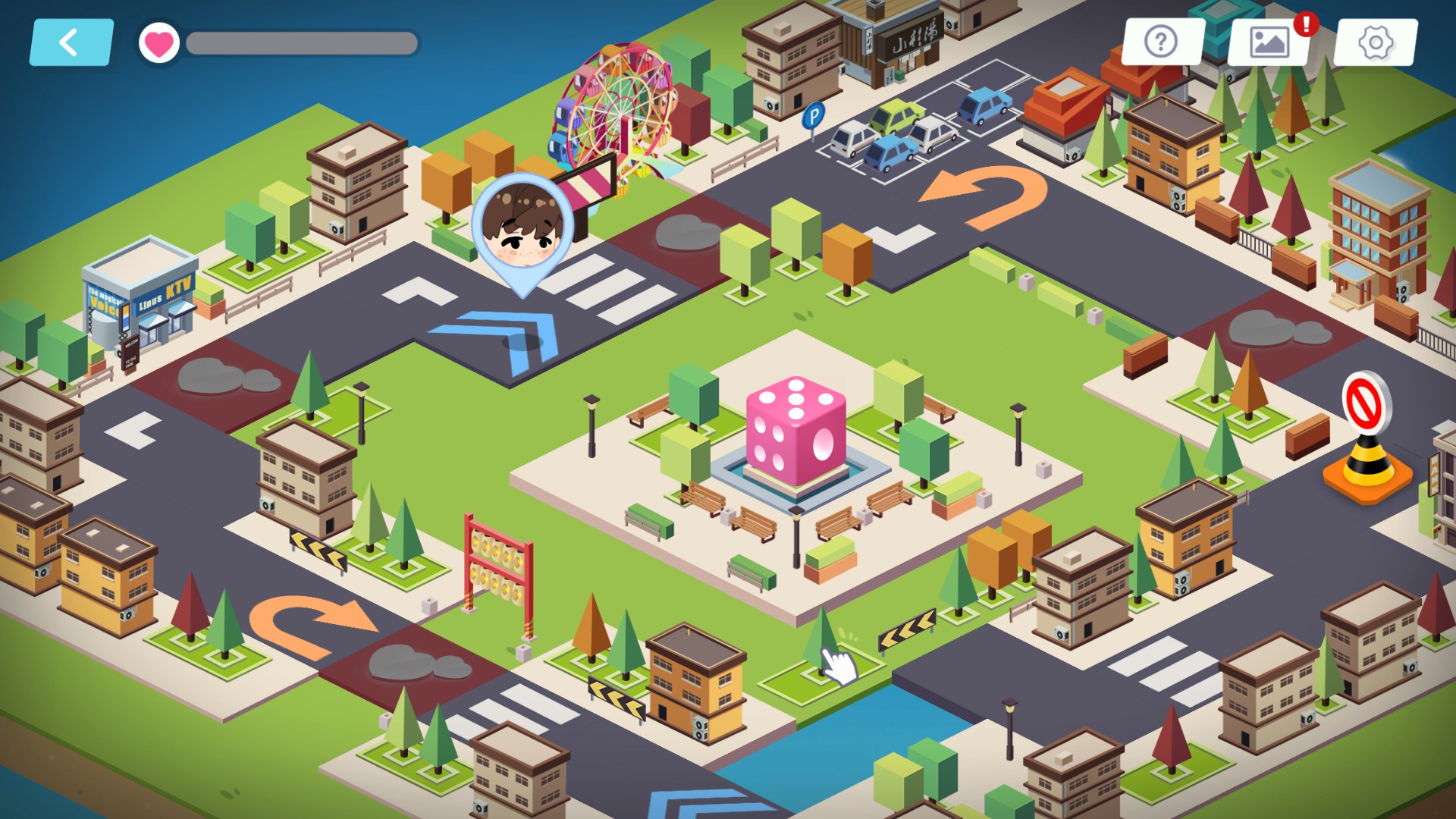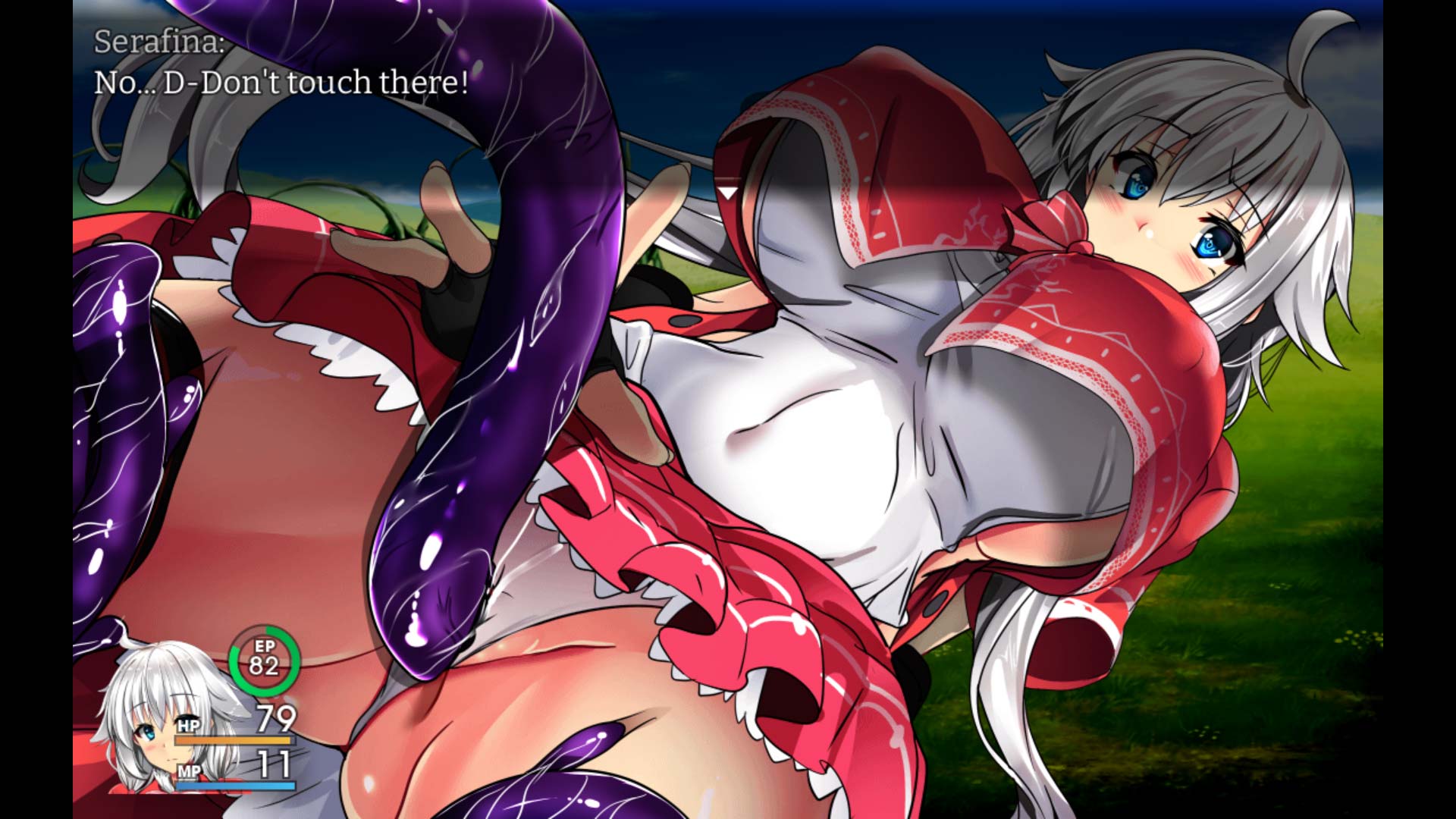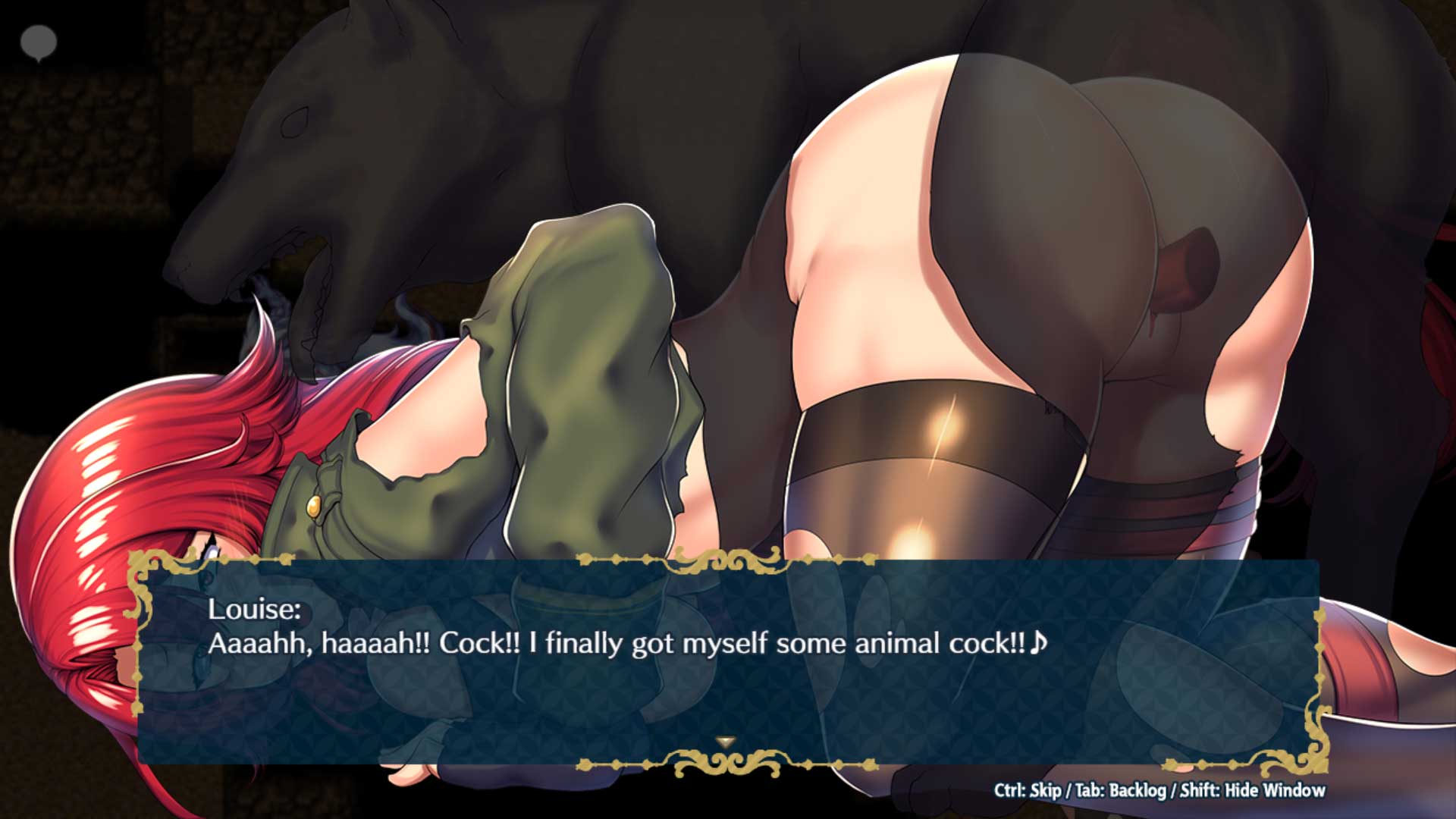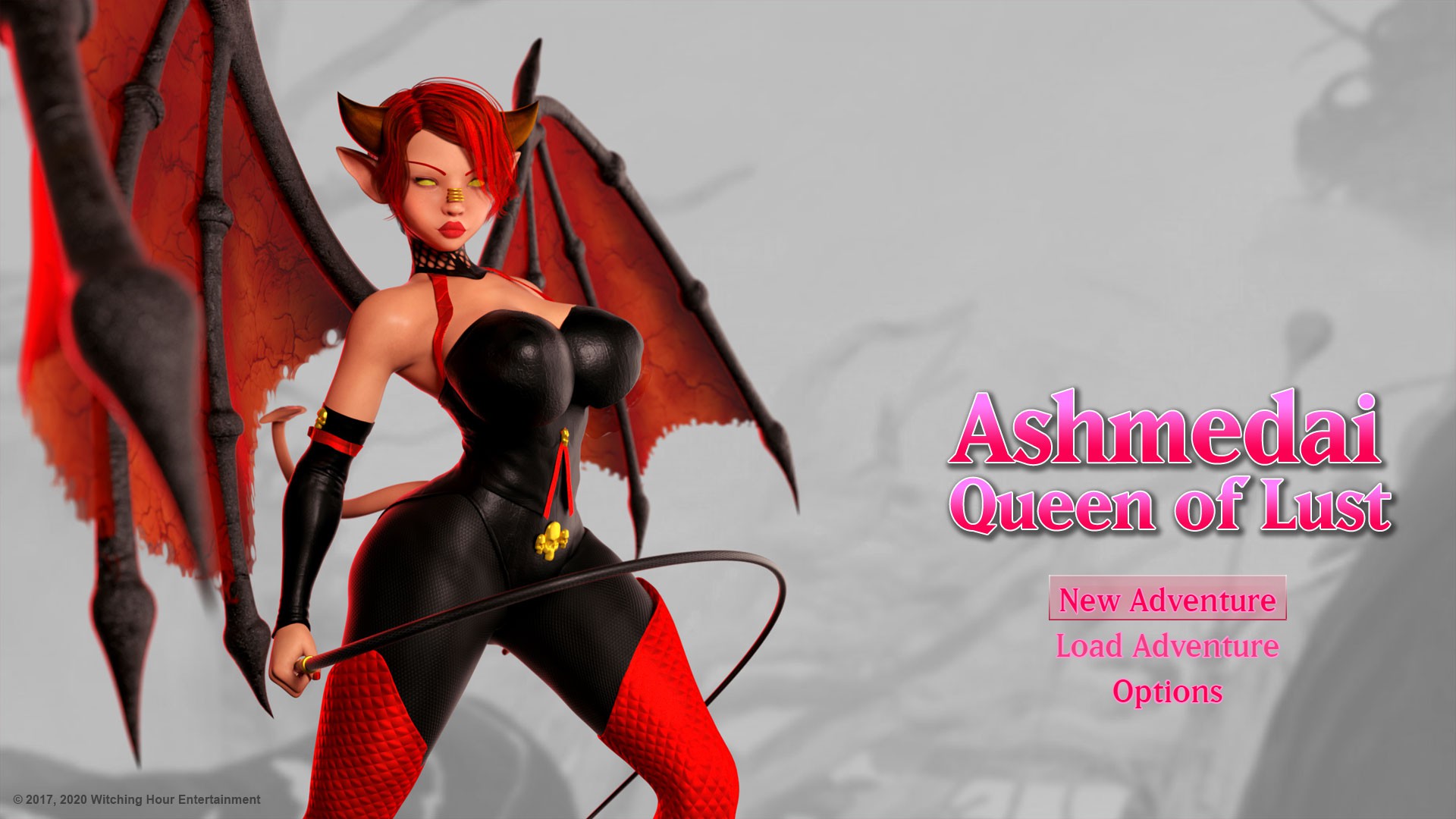
Chapter One: Introduction
Ashmedai: Queen of Lust is a lewd action-RPG with hidden-object gameplay available on Steam. It took me about six hours to beat the base game with save scumming; I exploited in-game gambling mechanics to gain a leg-up. Without save scumming, I suspect the game would take the average player around eight hours.
I received a free copy of this game for review purposes — thanks LarsMidnatt!
Chapter Two: Gameplay (2/5★)
Section One: Overview
On her mission to gain recognition as “Queen of da UNIVERSE”, you control Ashmedai and up to four of her “besties” in turn-based combat to claim the throne of Lust. Foregoing traditional exploration, Ashmedai: Queen of Lust plays like an episodic visual novel with a list of replayable, bite-sized “stages”. As expected, there’s “always something getting in [her] way.”
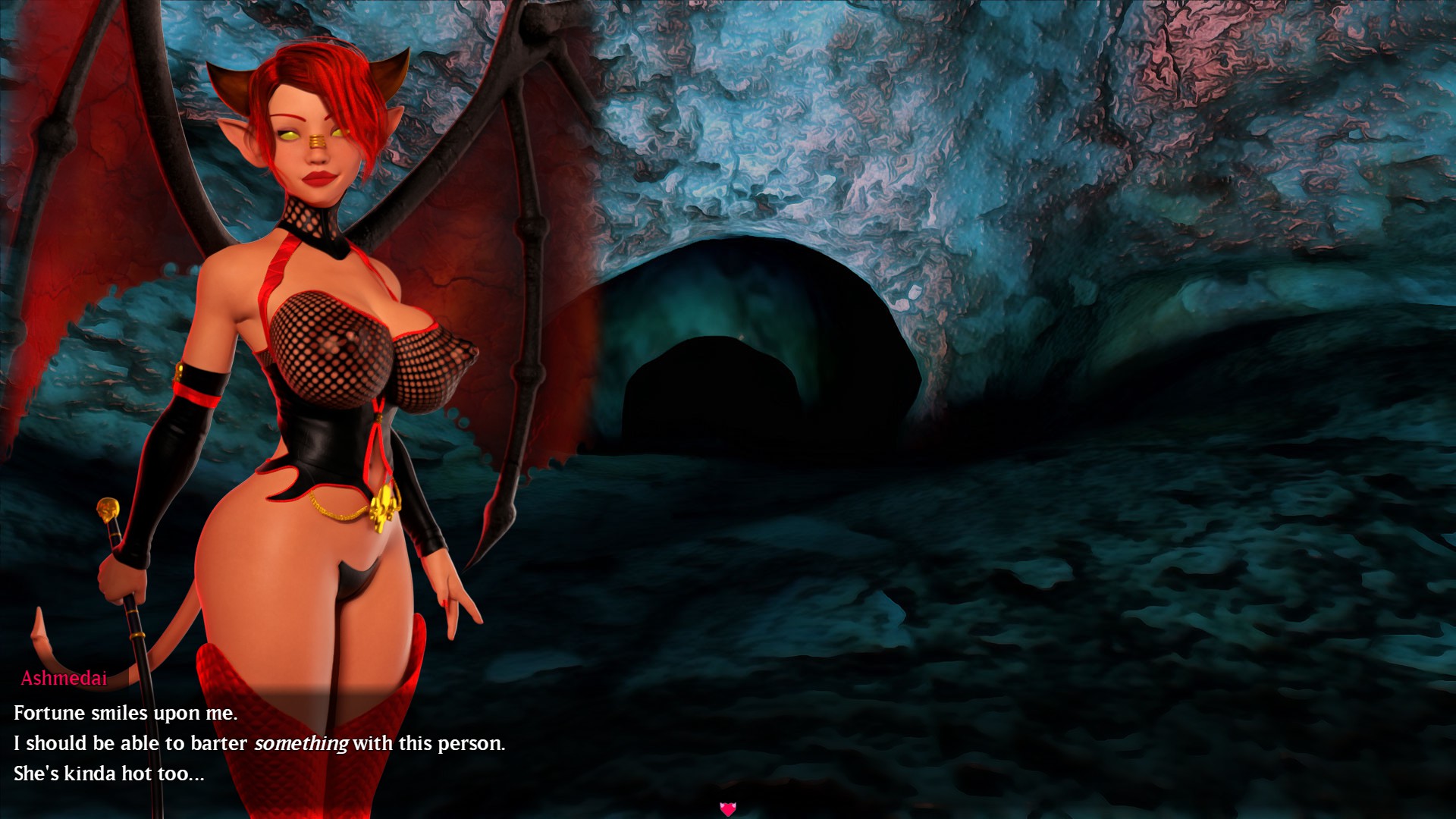
Section Two: Combat
Each character fulfills a different rule with varying attacks and special abilities. Ashmedai herself is specialized as crowd control, attacking multiple foes with a chance to “humiliate” and “bleed”. Other characters fill gaps in Ashmedai’s abilities, such as recovery and powerful attacks better suited for bosses. With a ten unlockable characters, there’s some room to mix and match.
Analogous to “TP” (or “technique”) in other games, each character gains “CM” (or “Climax”) based on their preferences (or “Climax Initiator”). Some characters want to deal damage, others want to take damage, and some aren’t picky. Climax is the fuel for the strongest attacks in the game. During my playthrough, climax-based attacks utterly dominated every fight.
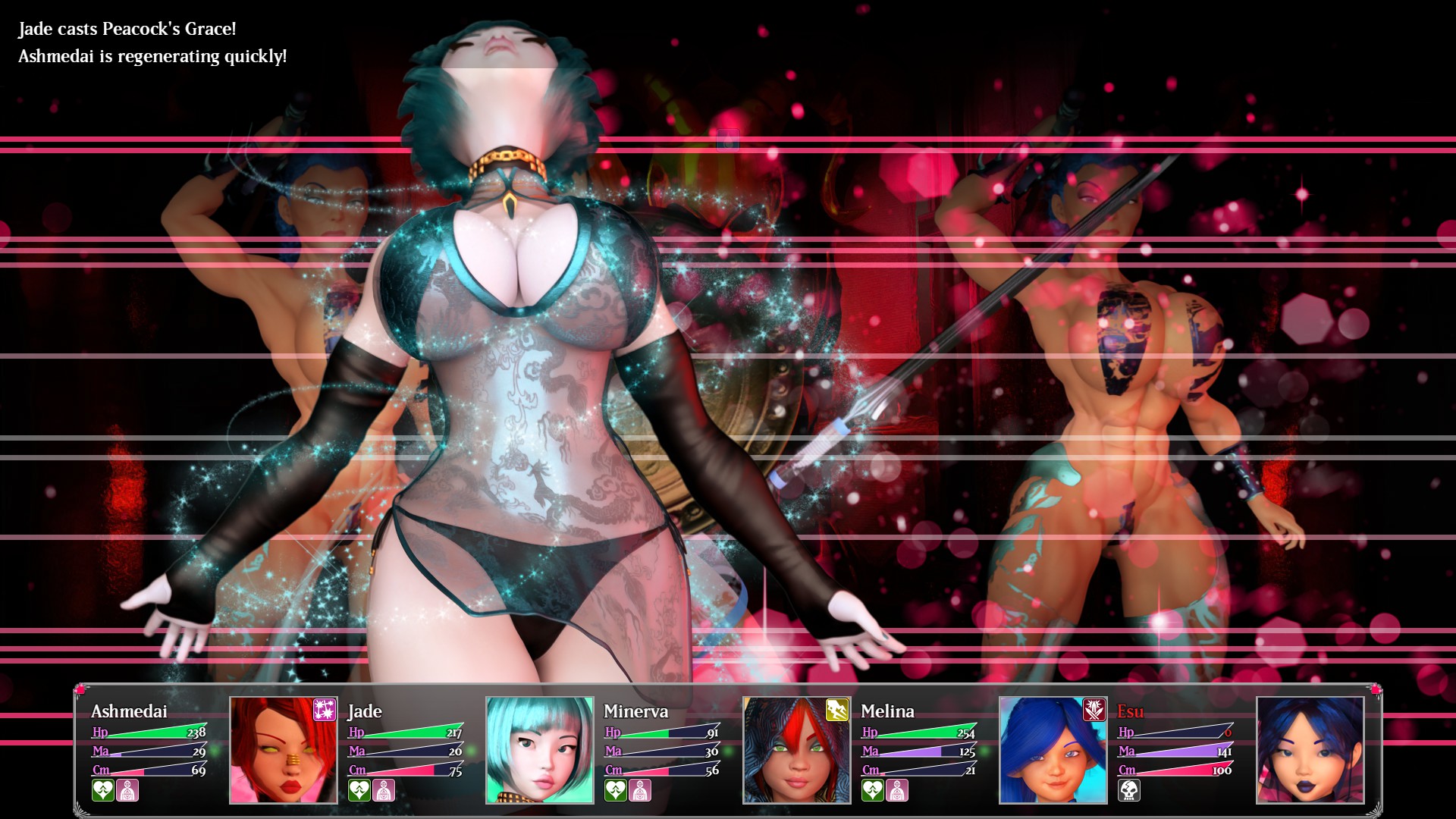
Section Three: Progression
As Asmedai and her besties defeats enemies, they gain experience points for “ranking up” (analogous to “leveling up” in other RPGs). In addition to providing a small, permanent boost, ranking up may unlock new abilities for teammates. But ranks only account for a portion of Ashmedai and friends’ stats; to an extent, progression is based on gambling.
Equipment is primarily derived from randomized “boxes”. Ashmedai’s bestie, Rosmerta offers a shot at boxes via her “Succubus Shuffle” minigame. To win, Ashmedai must simply turn over three of the same images. Participation is as simple as collecting “Succubus Shuffle Tickets”, which are provided as rewards for defeating bosses and collecting new besties.
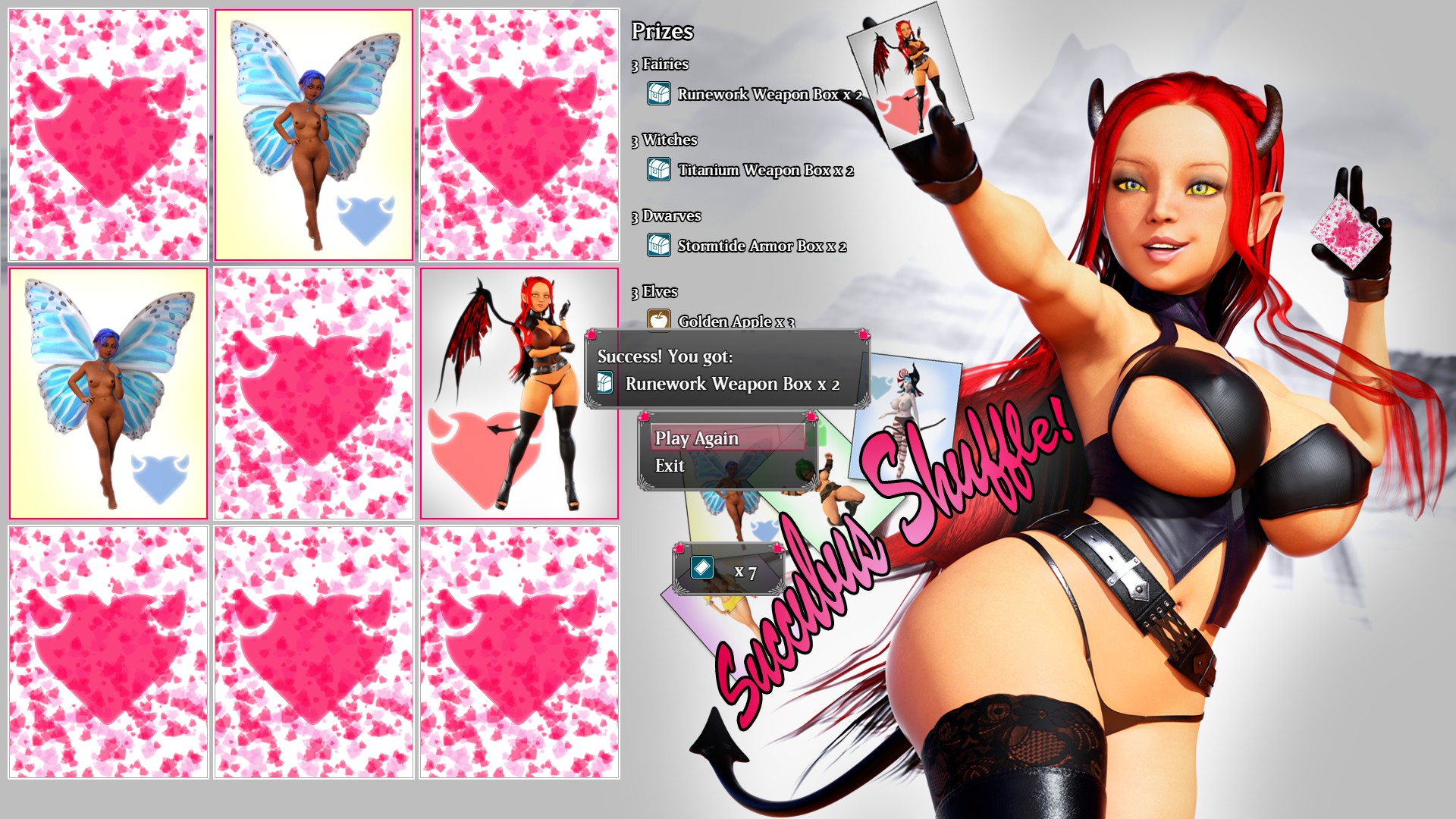
Alternatively, Ashmedai can “gamble away [her] earnings”. By spending denominations of at least 1000 gold she has a chance at the best rewards — including otherwise unobtainable “besties”. During my playthrough, Rosmerta’s besties pretty much carried Ashmedai to queendom.
It’s worth noting besties pulled from Rosmerta’s game never leave Ashmedai’s party — even during fights she is intended to fight alone. I suspect it’s a developmental oversight, but as the only truly permanent party members I consider them to be a form of progression.
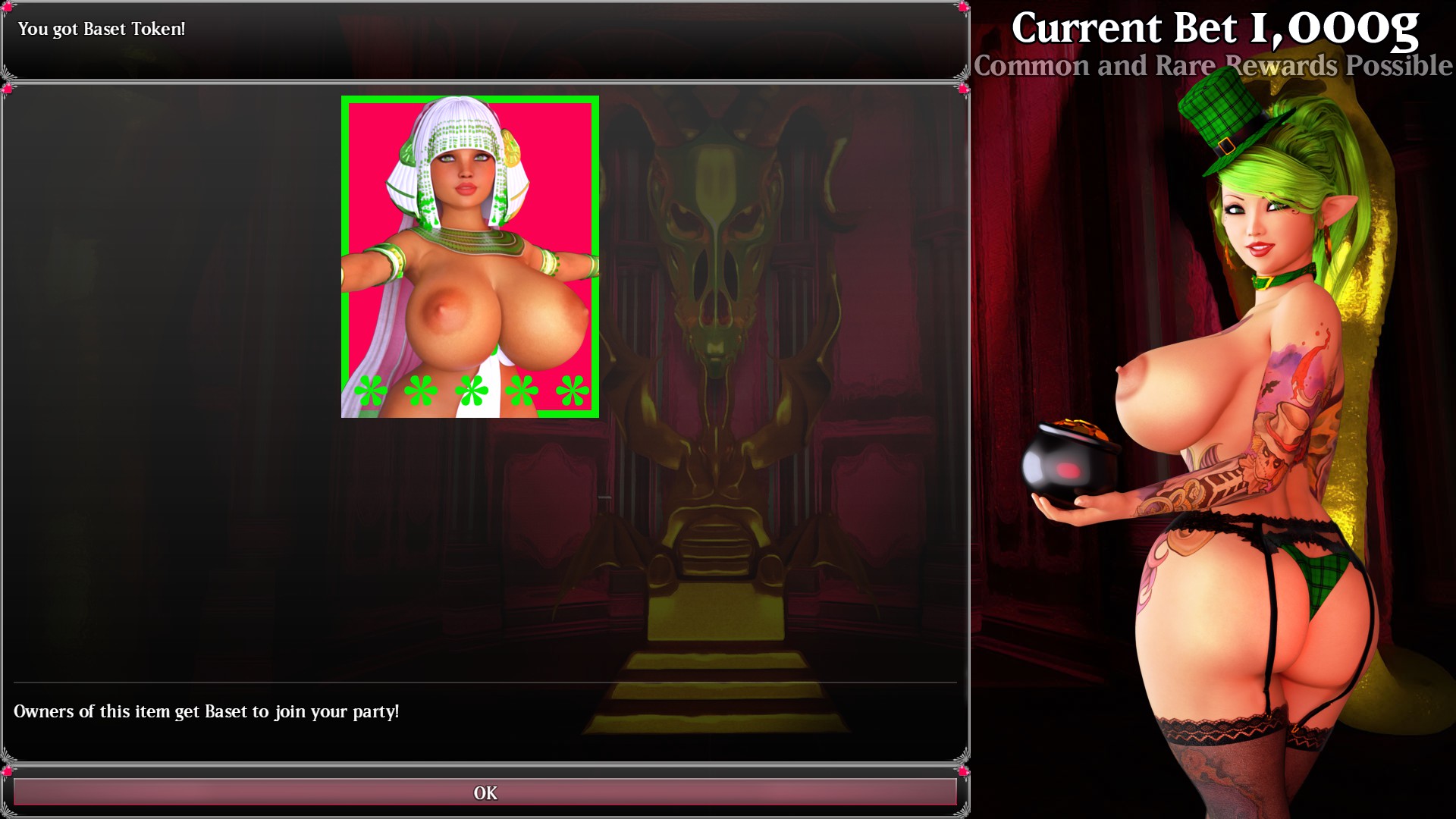
Section Four: Exploration
Stages may be freely replayed, allowing players to grind and replay dialogue. Ashmedai’s can chat with her “lairmates” for additional content, including optional sex-scenes and stages.
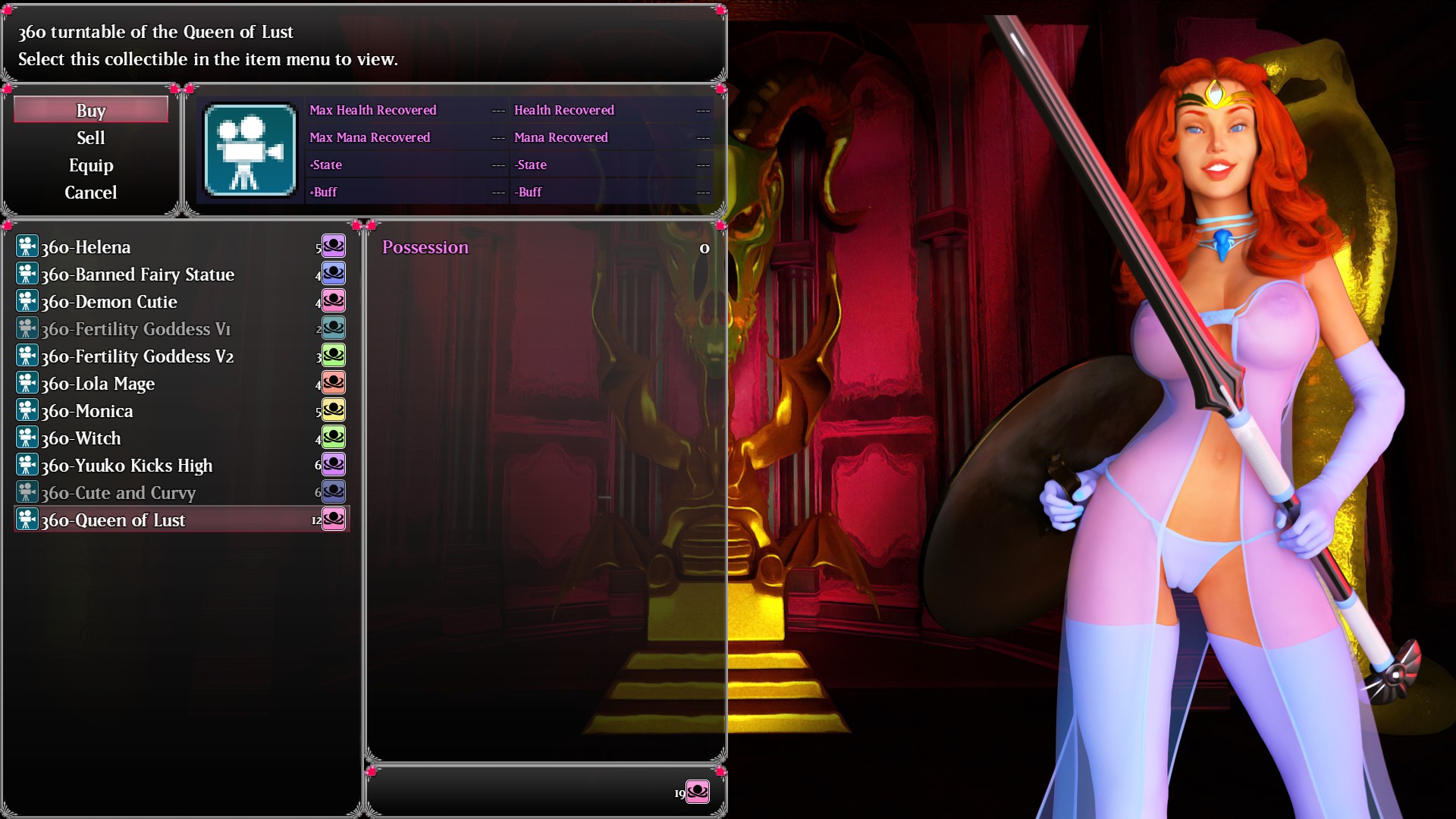
Section Five: Balance
There are no “inns” in Hell. The only way to recover lost magic and hit points is to purchase and consume restorative items. That is, until Harmony joins Adhmedai’s “harem” — she automatically, completely heals all party members free of charge.
If I didn’t pull Baset from the Rosmerta’s gacha, I’m not sure if I would have beat the game. Nobody in my party was able to dish out as much damage as her Inferno. As Ashmedai’s foes became virtually immune to my party’s attacks, Baset allowed me to continue progressing without grinding.
Turns move so slowly in this game, I worked on this article as they elapsed! Most of combat is literally watching slow, unskippable animation and text playback. I hated waiting for my next turn. I hated it so much, I would have probably stopped playing the game had I not had access to characters like Baset to minimize shitty combat.
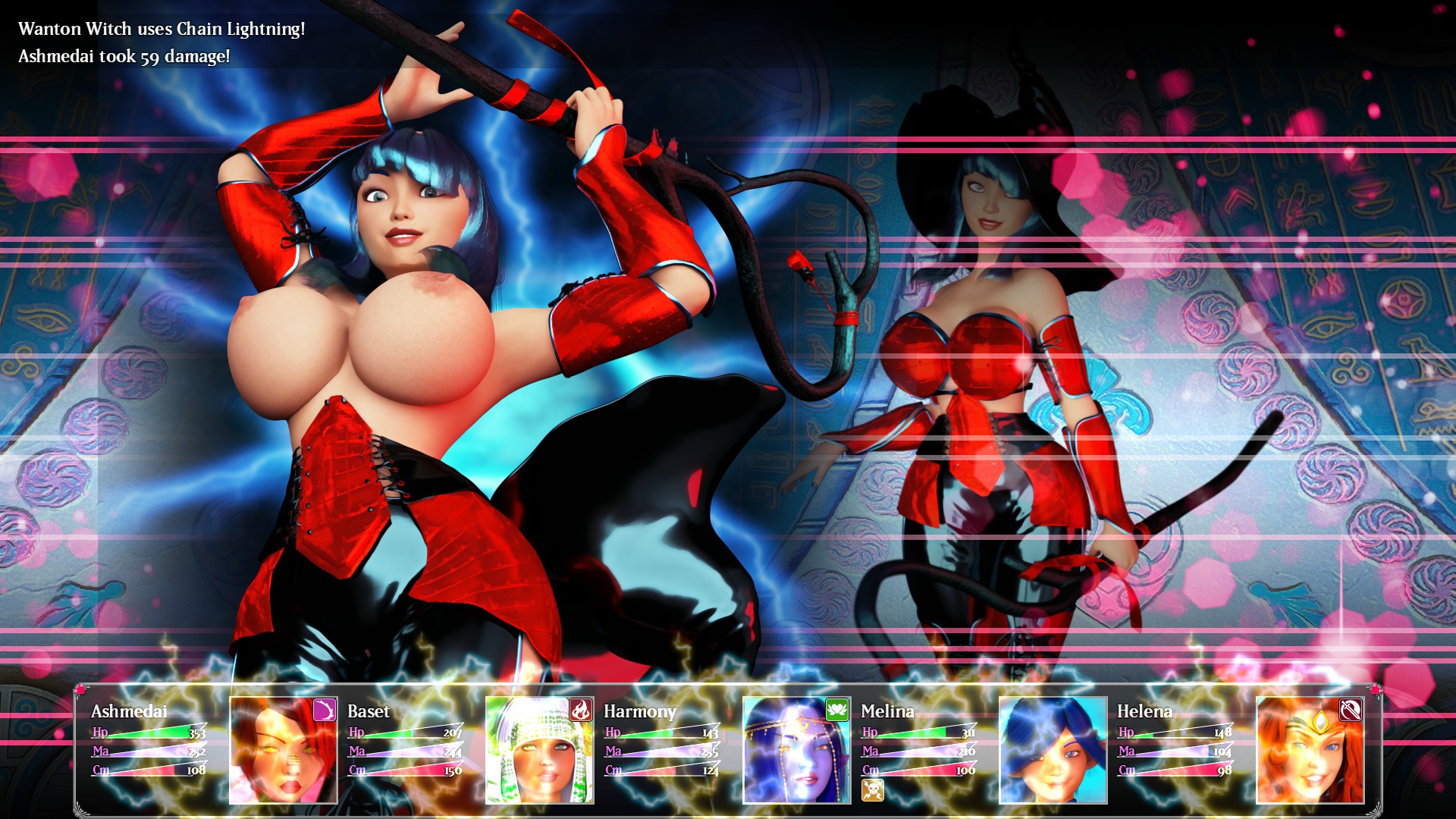
Section Six: Controls
The application controls as expected, but it’s not always clear what keys to press.
When comparing and equipping characters, you have to press “Q” and “W” keys to cycle through them. You don’t start by selecting a member– you just have to know which keys to press.
Most turn-based RPGs I’ve played have a feature for speeding up combat (typically using the “SHIFT” or “CTRL” keys). Ashmedai: Queen of Lust does not have such a feature, forcing slow, tedious text upon the player. Unfortunately, the closest one can get to speeding up battle is to hold down “ENTER” to “confirm” text as soon as it finishes.
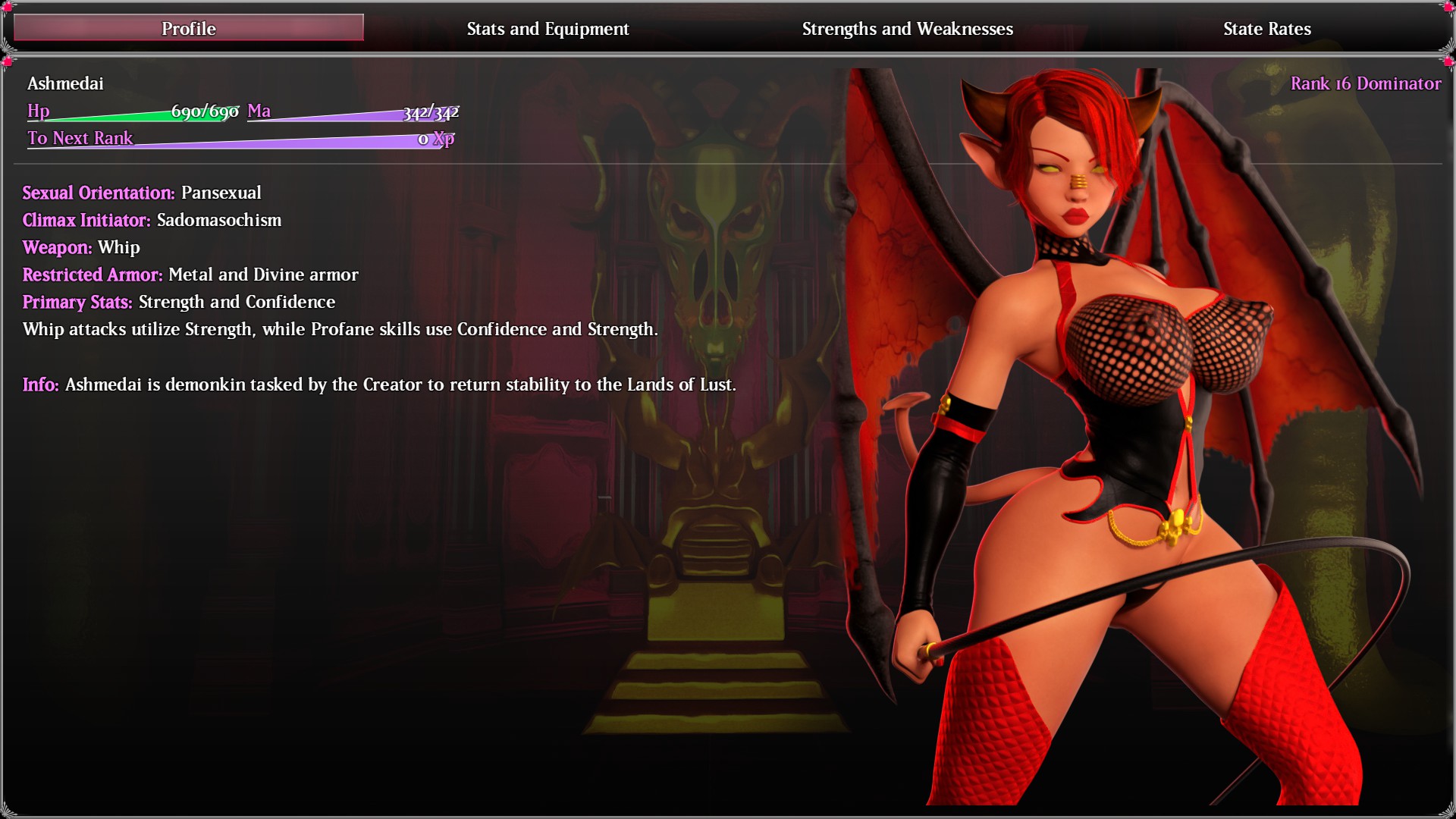
Chapter Three: Sexual Content (3/5★)
Section One: Content
There are 352 unlockable entries in the gallery, mostly comprised of nude enemies and supporting cast. Some content features characters from LarsMidnatt‘s other releases, such as Bacon Quest and The Legend of Zuri.
Throughout the gallery are themes of domination and submission. Ashmedai herself is a dominatrax, forcing herself onto anyone who doesn’t say “no”. For the most part, the content appears to be consensual, but there were a few scenes which fell outside of the definition. The content is mostly heterosexual and futa sex, but there are a few lesbian scenes to see.
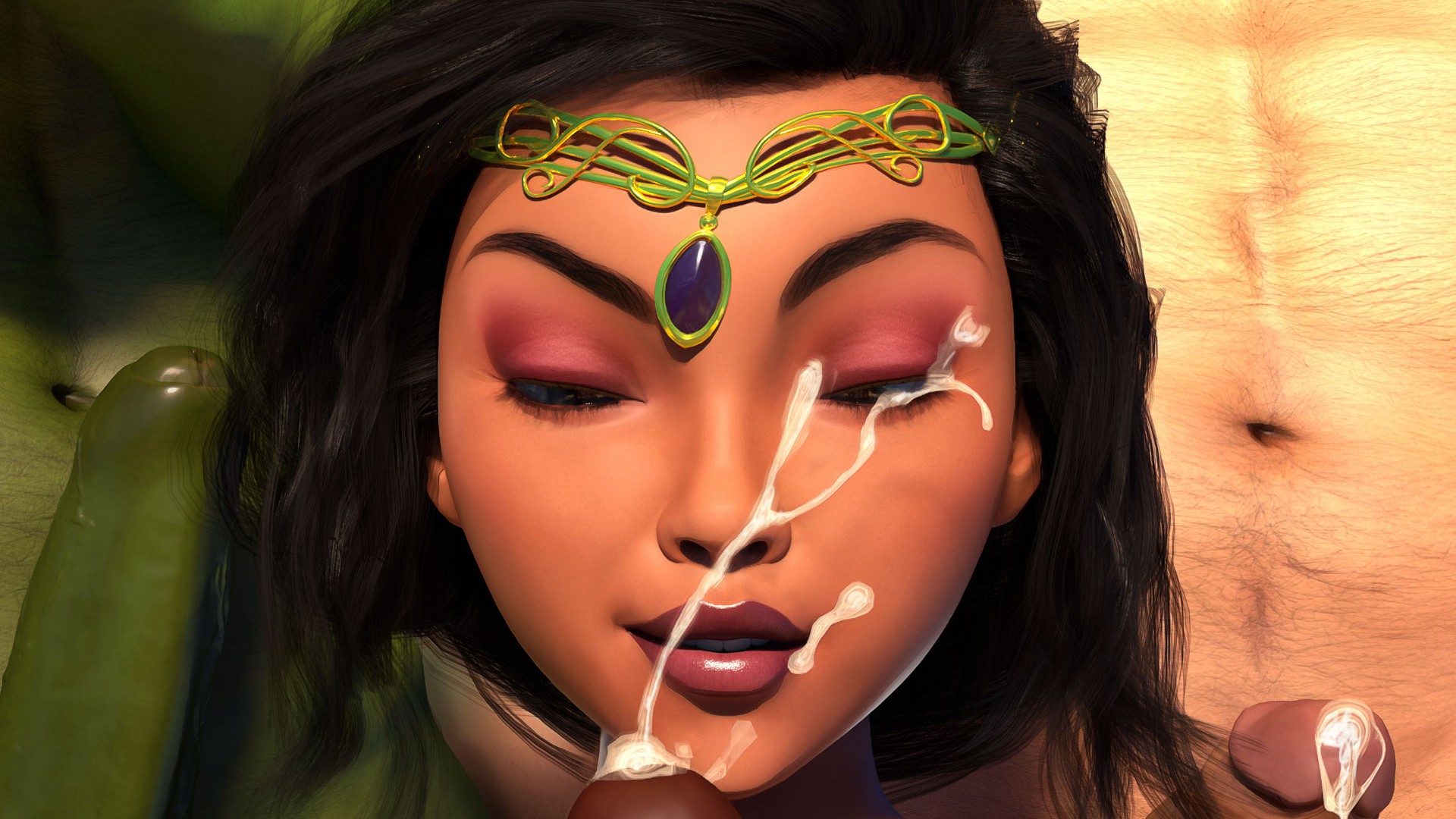
Section Two: Implementation
Upon retiring to her camp, one of three random images are shown to show Ashmedai masturbating to vent off acculuated “CM” (or climax) from battle. As the story progresses, sex-scenes are naturally shown to the player — but most content must be purchased from Ashmedai’s besties with “essences”.
Essences are earned at random by defeating enemies. After completing the game, I could only afford a small number of unlockable content. Completionists will likely need to consult the “Enemy Gallery” to ascertatin which enemies to repeatedly defeat to unlock the rest of the gallery.
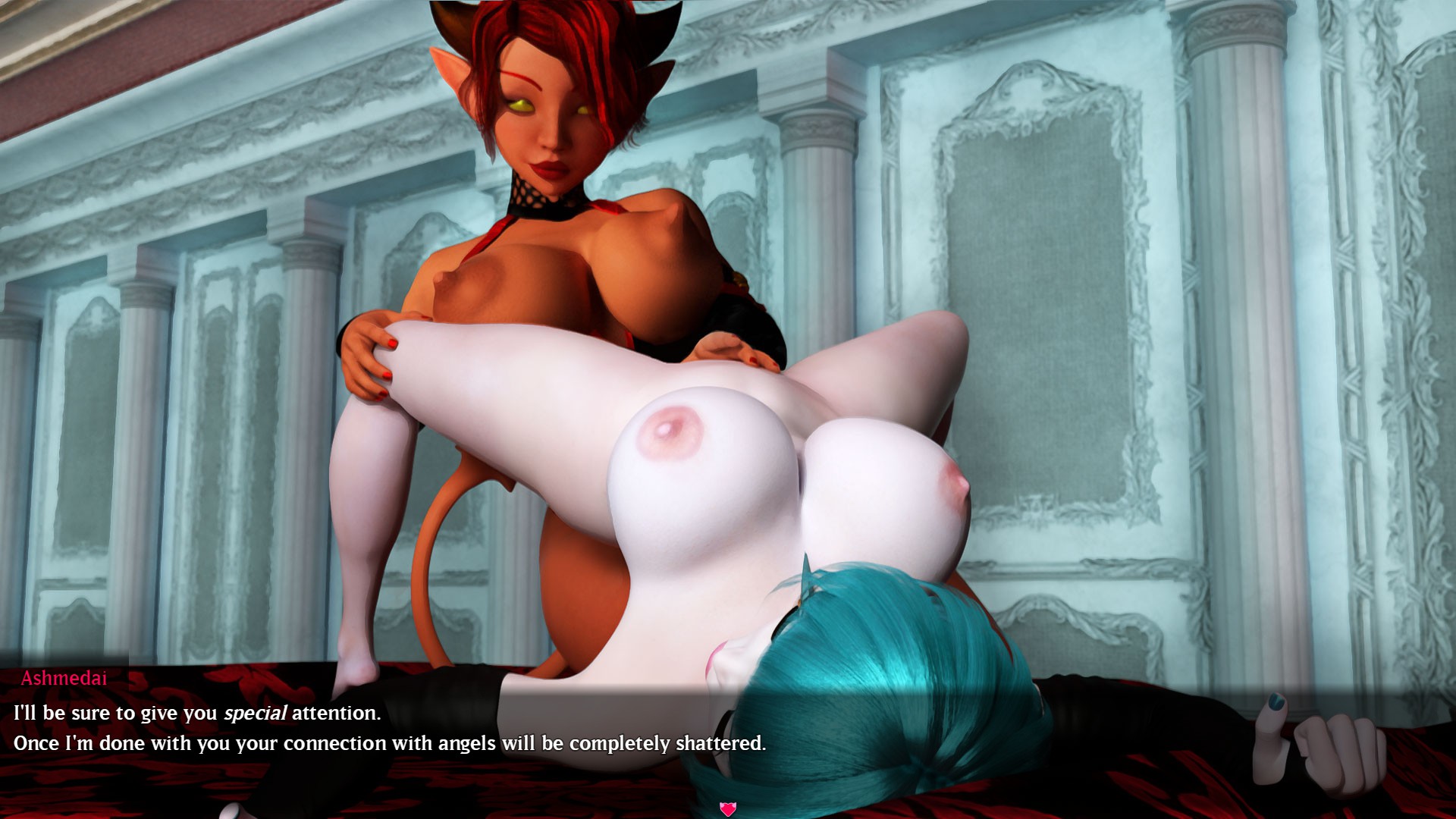
Section Three: Interactivity
The sex-scenes are not interactive.
Section Four: Quality
The artwork is unremarkable; frankly, I found most of the characters to be ugly. Between the dialogue and fetish character proportions, the sexual content feels like an amateur gallery. With weirdly cropped images, inconsistent lighting and backgrounds, it all reminds me of all of my “test renders” on my 3D modeling PC.
It’s clear most, if not all images are modified with photo filters. I think LarsMidnatt was aiming for a sort of cartoon vibe, but it comes off as lazy. In my experience, if you want to pursue toon graphics, it’s not as simple as a photo filter. Either that or LarsMidnatt wanted to quickly cover up visual artifacts or low quality modeling.
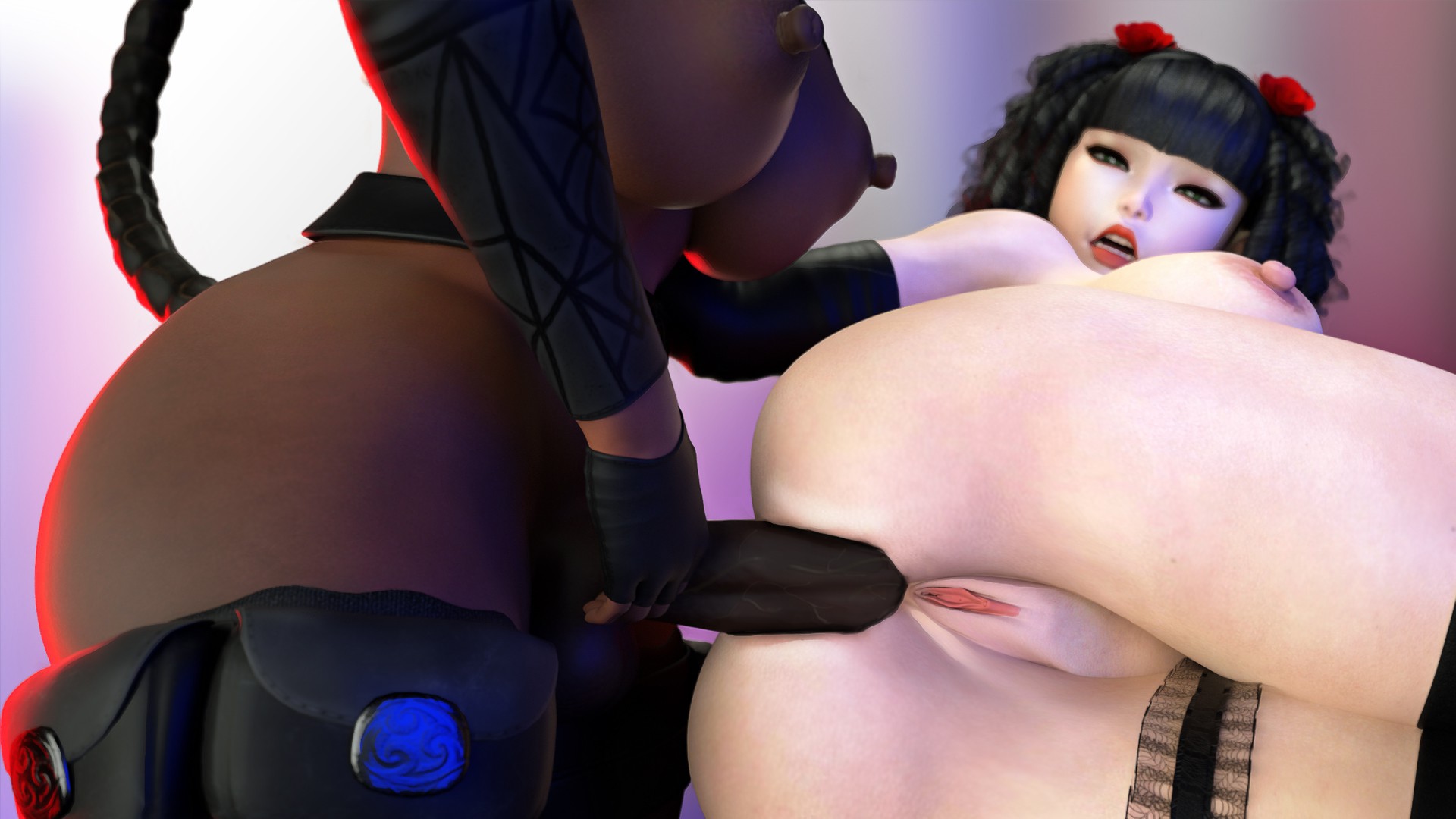
Chapter Four: Story (2/5★)
Section One: Summary
Delivered to “the second realm of Hell”, Ashmedai, Queen of Lust has been enlisted by “The Creator” to awaken the “Lands of Lust”. Her journey begins in “a cold, dark and damp place in hell” — or “Limbo, the realm that connects to all other realms in Hell”. There’s just one problem; she’s “still a noob”. Before she’s ready to collect her “authority”, she needs to garner the help of Hell’s inhabitants to compete with the inhabitants of Greed and Dispair.
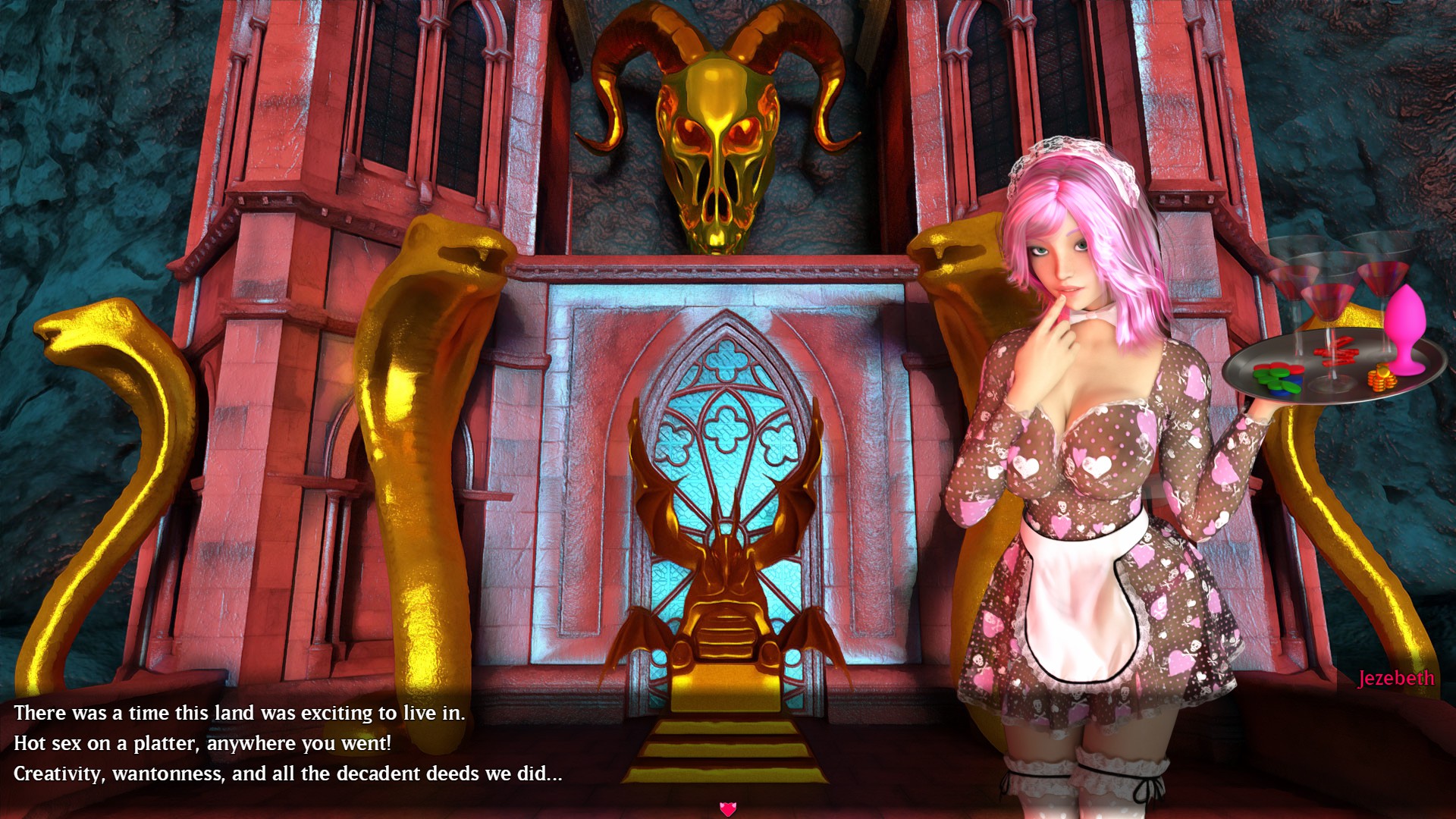
Section Two: Characters
Ashmedai is the star of the story. With the mind of a horny teenager, her responses are limited to forward sexual solicitation. In fact, she’s the most childish character in the game. Her friends and adversaries have a considerably more serious tone, acting more like actual adults. . . sort of.
Inexplicably, Ashmedai retrogresses into a child throughout the game, literally. Her avatar is switched out for a toddler as her speech unconvincingly devolves. The first time she retrogressed, I thought she was reliving a memory. But I only got more confused when I realized she was actually transforming in the story. I figured maybe it was an ABDL thing, but Steam doesn’t allow loli content. At the end of the day, I think it’s just a literal representation of “acting childish”.
I would talk about the rest of the cast, but nobody has enough screen time to make a meaningful impact. There’s no point in paying attention to the Ashmedai’s friends; they only live in the background, lazily inserted as an excuse to bolster the character roster.
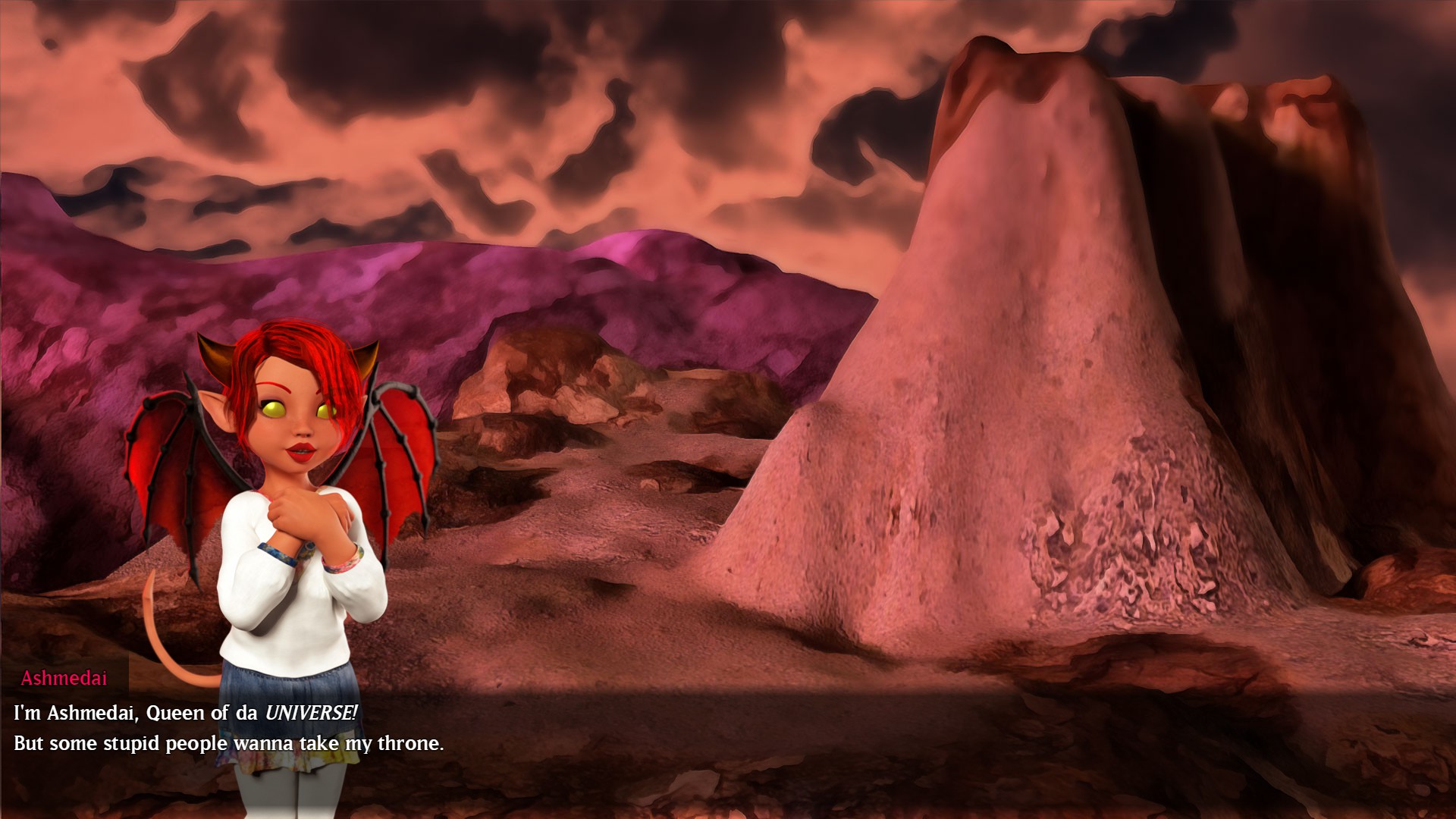
Section Three: Plot
Not long after arriving, Ashmedai encounters the Nihilists. Led by the Nihilist Enforcer, he says;
You can not harm me, for I have relinquished all desire.
All passion, wants, needs and ambitions are pointless.
They are the root of all conflict and suffering.
The Nihilists are an interesting concept for a villain because in some ways, they’re the antithesis of Hell; unwavered by Ashmedai’s lustful advances and disinterested in the politics of Lust, they’re uncorruptible. I was interested to see how the Ashmedai would deal with Nihilists.
I thought, “maybe she will show them what it means to feel desire?” I wondered “Will the Hell regions of Despair and Lust have to come together for a common enemy?”
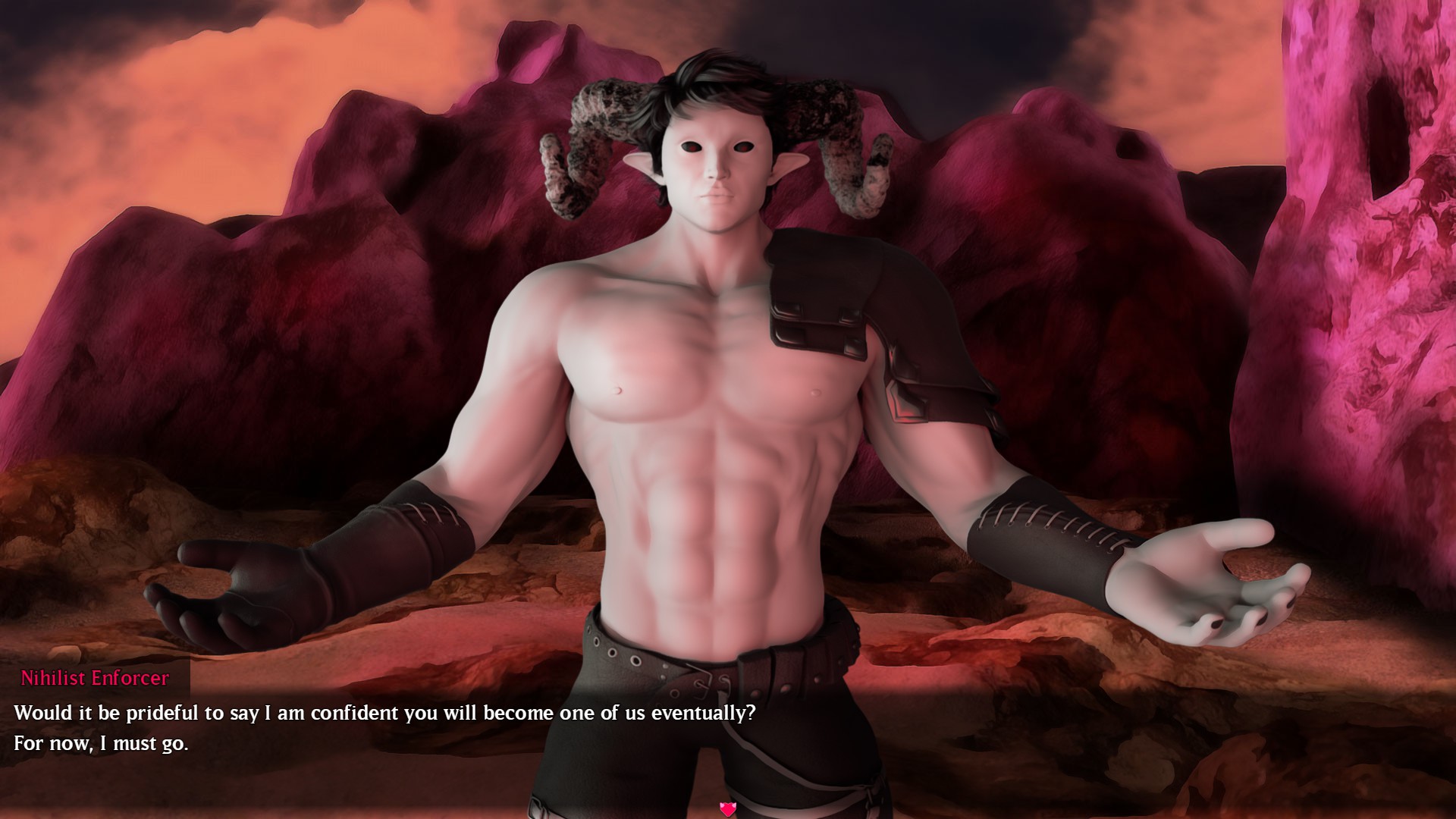
But here’s the kicker; “them emo greyboys” are defeated offscreen by some “rabble rousing nun” that appears out of nowhere. I think LarsMidnatt thought killing off what players would interpret as the main antagonist off-screen would be comedic (but I wasn’t laughing.) I felt like I wasted my time trying to pay attention to the story.
It would be wasted again when that same nun walks off screen, never seen again nor making any worthwhile contribution to gameplay. She makes a passing mention of the real antagonist — whom surprise surprise has never been mentioned up until this point. No plot twists or betrayals, just another busty women nobody cares about.
I don’t feel bad about “spoiling” so much of the game because what’s the spoil? The game could start where Ashmedai meets the “Sisterhood” and little useful writing would be lost. At least LarsMidnatt wouldn’t waste so much of players’ time.
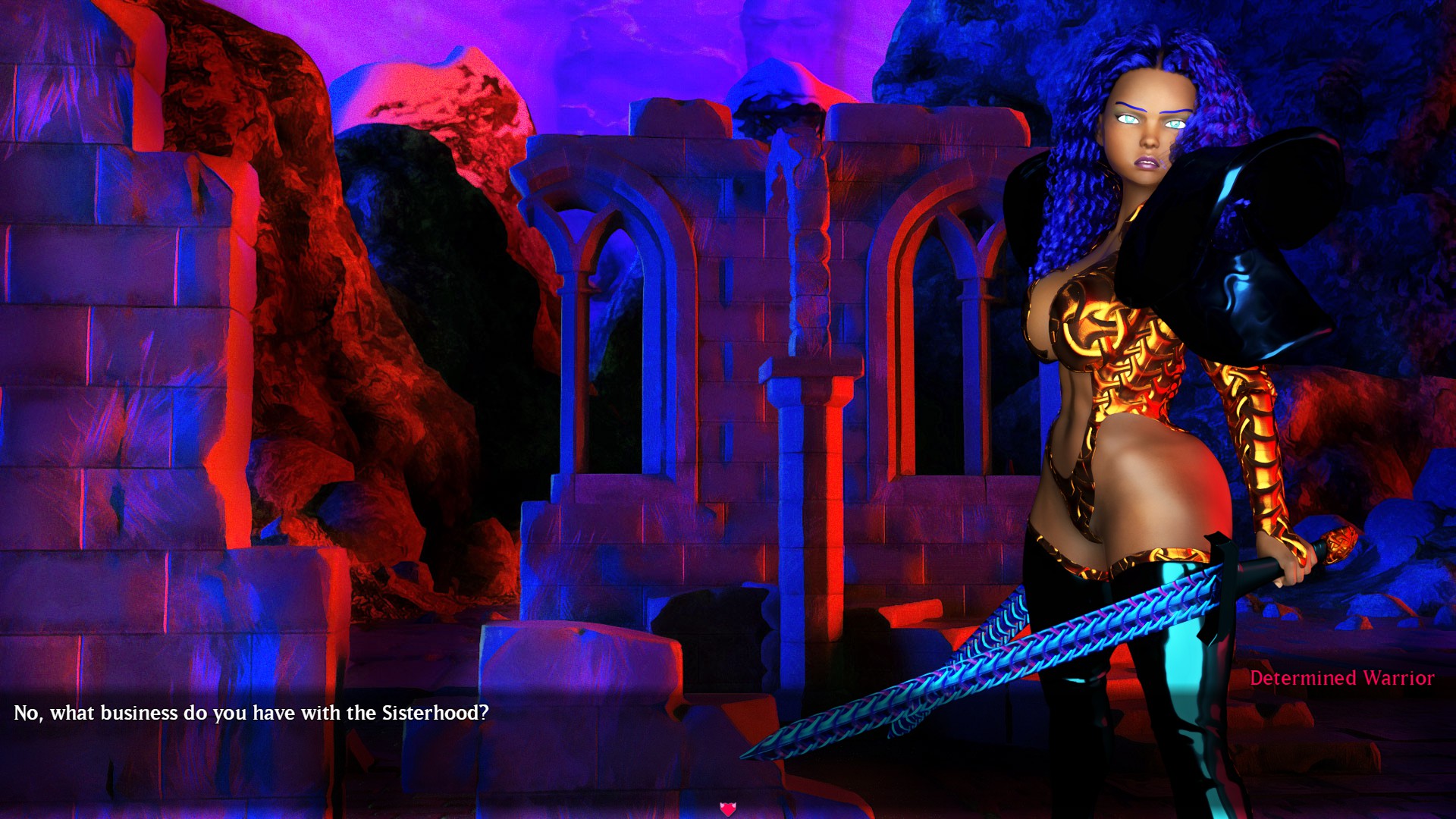
Section Four: Writing
The writing is childlike — it reminds me of when I used to write humorous fanfictions of my own characters as an angsty teenager. Admittedly, the dialogue got a few chuckles out of me. But for the most part, I found it difficult to sit through the writing.
Maybe I’m just a “somber one”.
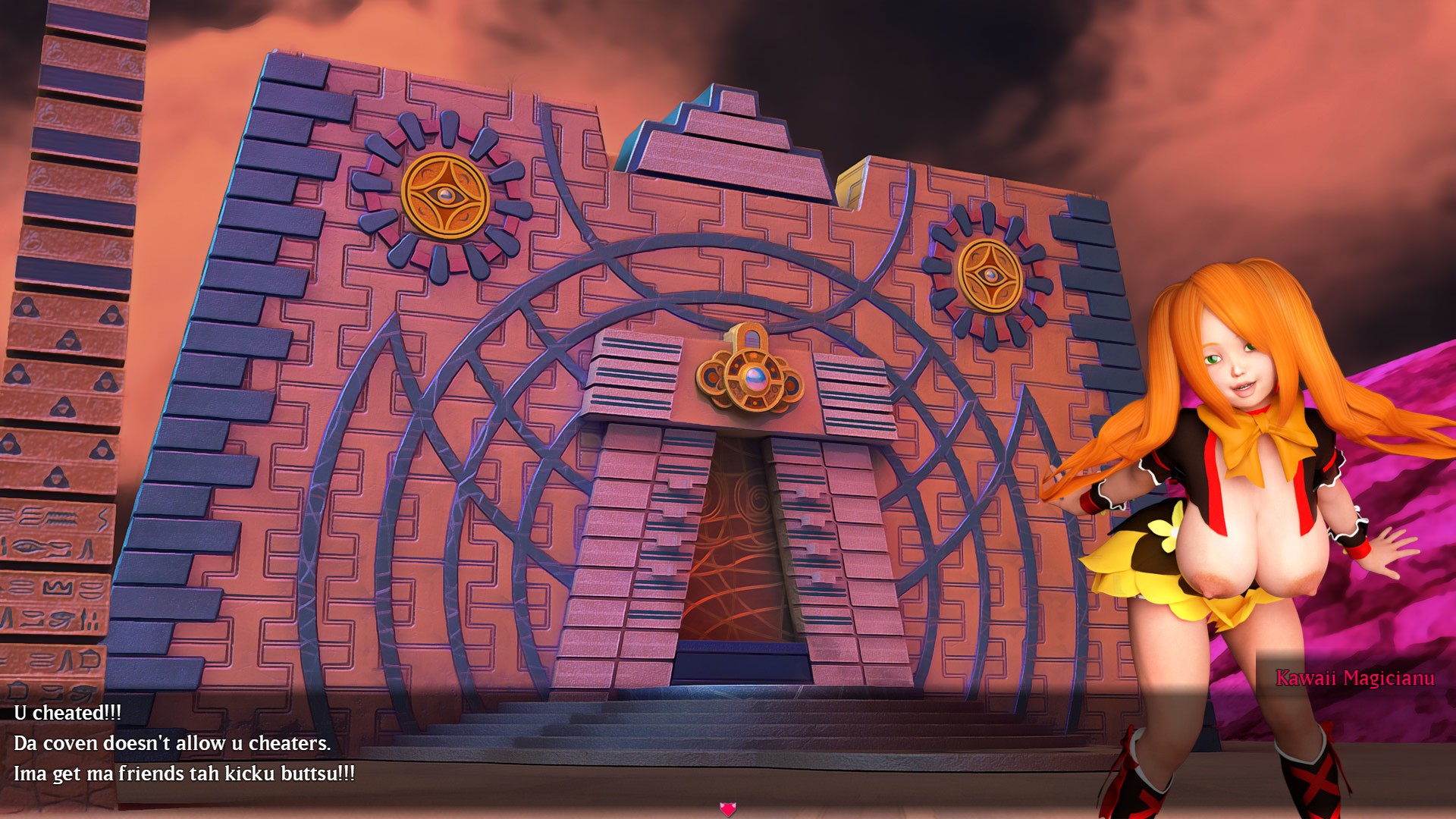
Chapter Five: Sound (3/5★)
Section One: Soundtrack
The music is a decent selection of low key, fantasy themed tracks which fit the pacing of gameplay. Often comprised of dialogue and slow combat, I think LarsMidnatt chose appropriate jams.
Something I enjoyed about the music was the variety — there is a small selection of tracks which alternate between battles, adding a lot of musical variety as waves of enemies spawn in.
I wasn’t fond of the music played during the transition to sexual content — those tracks were too much of a thematic discourse from the mainline audio, more appropriate for a modern setting.
Section Two: Sound Effects
It’s nice to hear something other RPGMaker defaults! The sound effects are nothing to write home about, but they do the job. Combat’s annoying, but navigating the user-interface is pleasant.
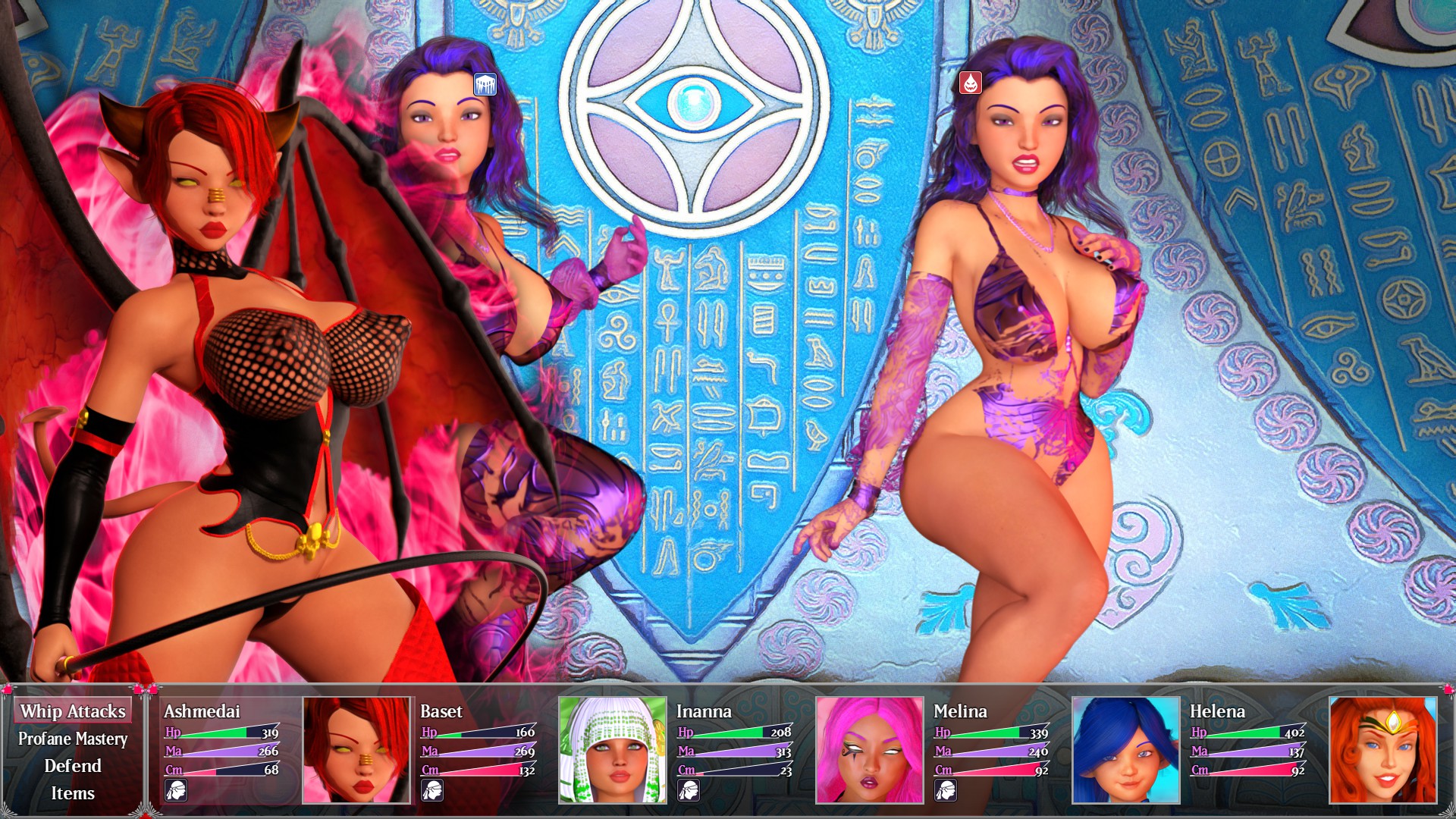
Chapter Six: Visuals (2/5★)
Section One: User-interface
The user-interface is graphically pleasant. I enjoyed seeing images of playable characters shown throughout the UI to break up the textual monotony. I only have minor gripes with ease of use.
The application should be closeable via the titlescreen. I shouldn’t have to toggle full-screen or hold down “CTRL” and “ESC” to break focus from the application. On that topic, there should be visual ques for navigating screens with “pages” — such as while comparing or equipping characters. There’s no buttons or graphics to notify players which keys are used to navigate.
Section Two: Graphics
The graphics are below average. It’s clear LarsMidnatt was really stretched on time, money and/or skilled 3D artists. But I’ll start with the positives; the character models are consistently styled. A pet peeve of mine is when 3D artists don’t stick to a base.
The visual effects were awful, a collection blurry GIFs which overstayed their welcome.
I loved the awful, awful backgrounds. They are so heavily distorted with filters, I can’t help but wonder why LarsMidnatt didn’t add more. With so little detail, they might as well! I don’t imagine it would have been that difficult to render more angles and close-ups. When your mistakes are covered up in thick layers of filters, there’s no need for competent artists!
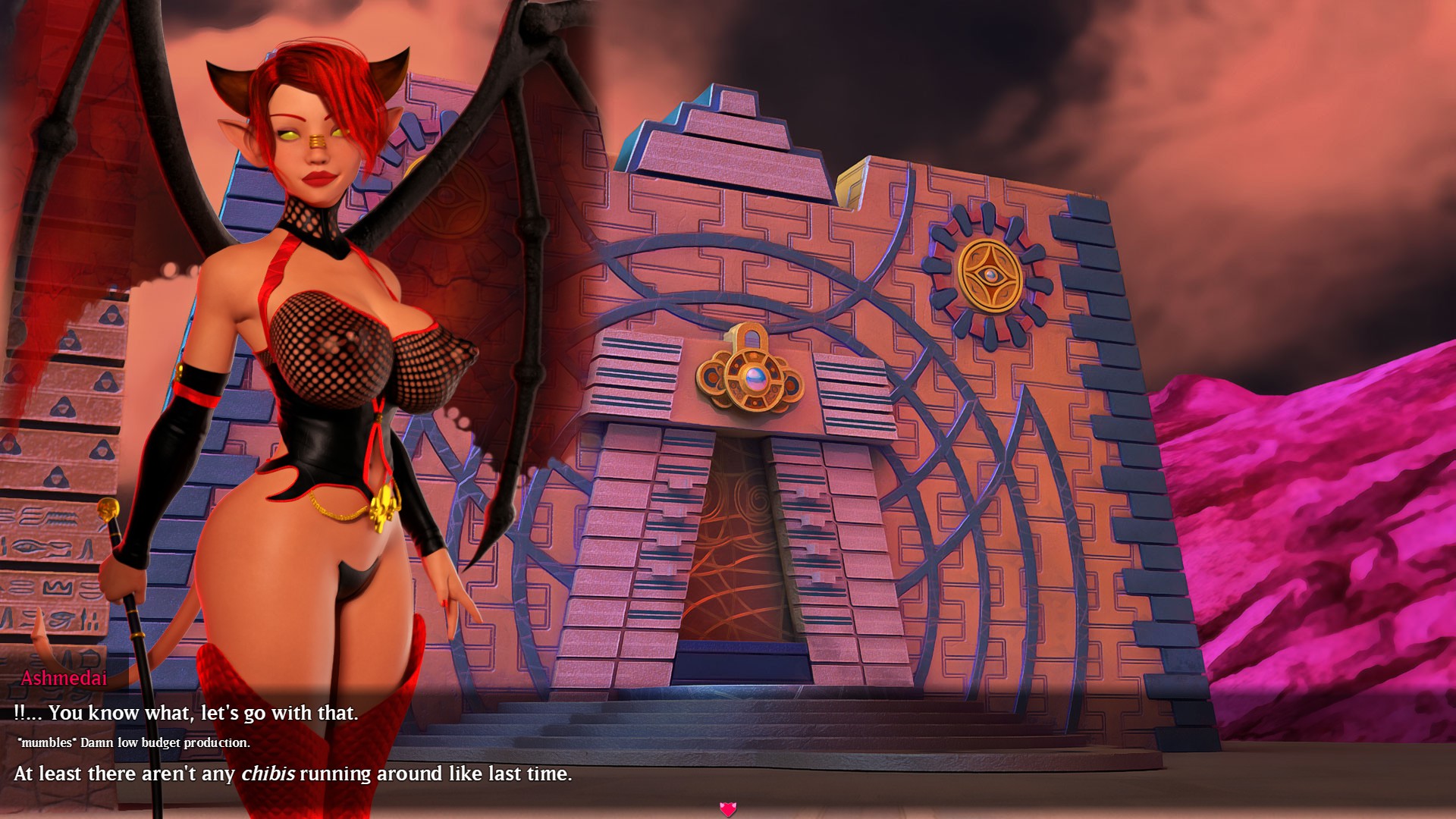
Chapter Seven: Verdict (2.5/5★)
Ashmedai: Queen of Lust feels like somebody just having a laugh. I wasn’t laughing, but the game offers challenging battles with teenage humor that’s sure to be someone’s cup of tea. Nudity is consistent, and there’s lots of unlockable images to string completionists along. The sexual content is average at best, but a few of the scenes are kind of hot. My biggest issue with the game is the speed of combat; if you aren’t lucky with the gacha, you can expect to grind. But combat is such a slog, in spite of otherwise “okay” gameplay I don’t recommend the game for this reason alone. Hopefully, LarsMidnatt does something about the speed of battle and randomized progression.
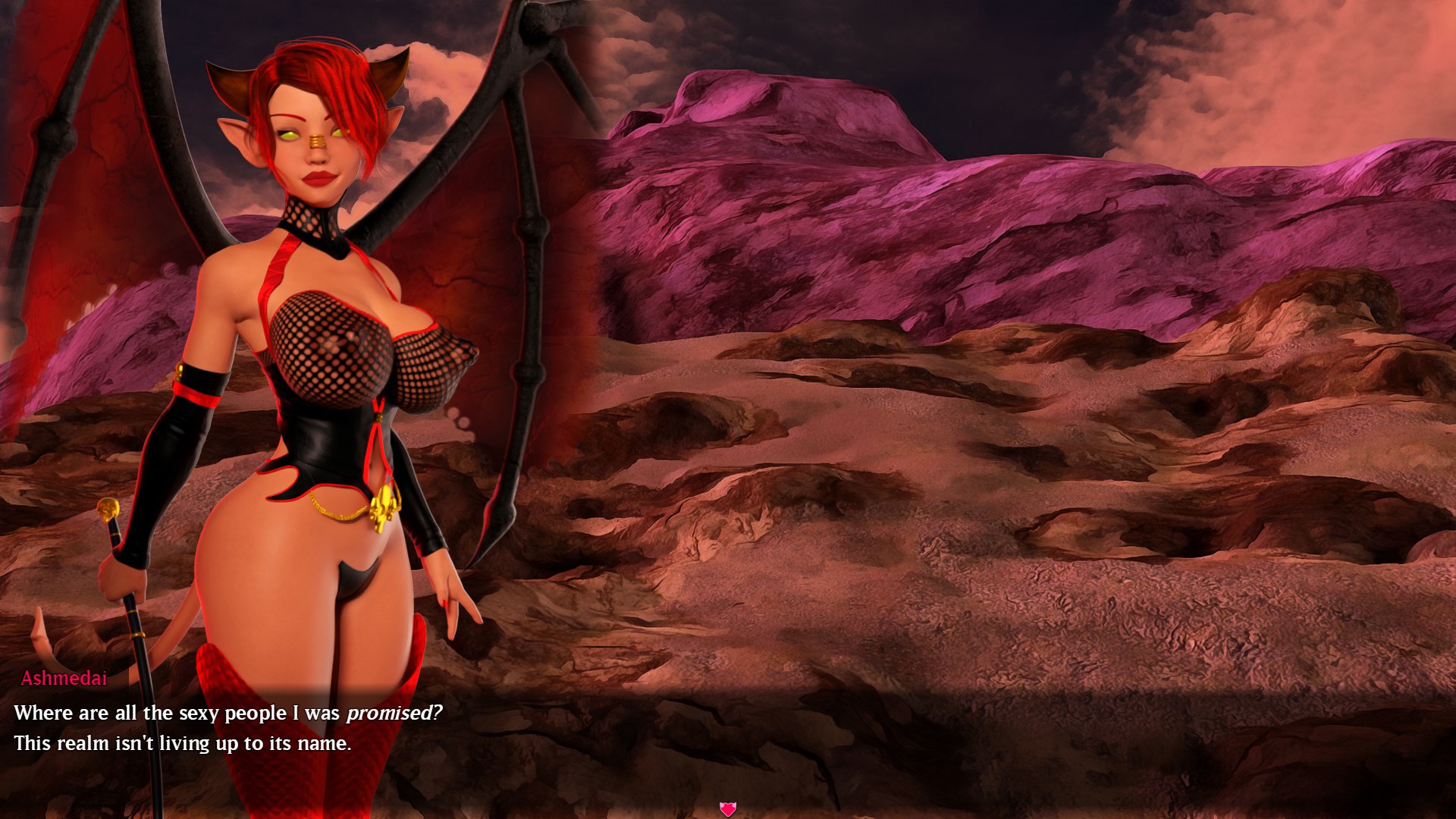
Chapter Seven: Recommendations
Reactions should be showed, not described like a teenage roleplay; a benefit of games is the ability to change images to convey emotions as opposed to writing them in asterisks.
*frowns angrily*
Players should be able to choose their party before the final battle. I was forced to play with dead weight when my team was repopulated with characters I never bothered to rank up and equip.
On that topic, all characters should level up simultaneously. There’s no incentive to level up anyone other than your favorite characters, which can lead to an awfully one-sided final battle.
Ashmedai’s lairmates should warn her that she’ll have to fight alone. Players would benefit from a heads-up to re-equip as needed to battle without any supporting characters. They may want to condense their best items for a fighting chance.

